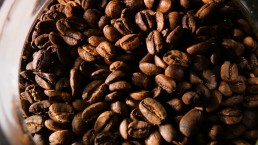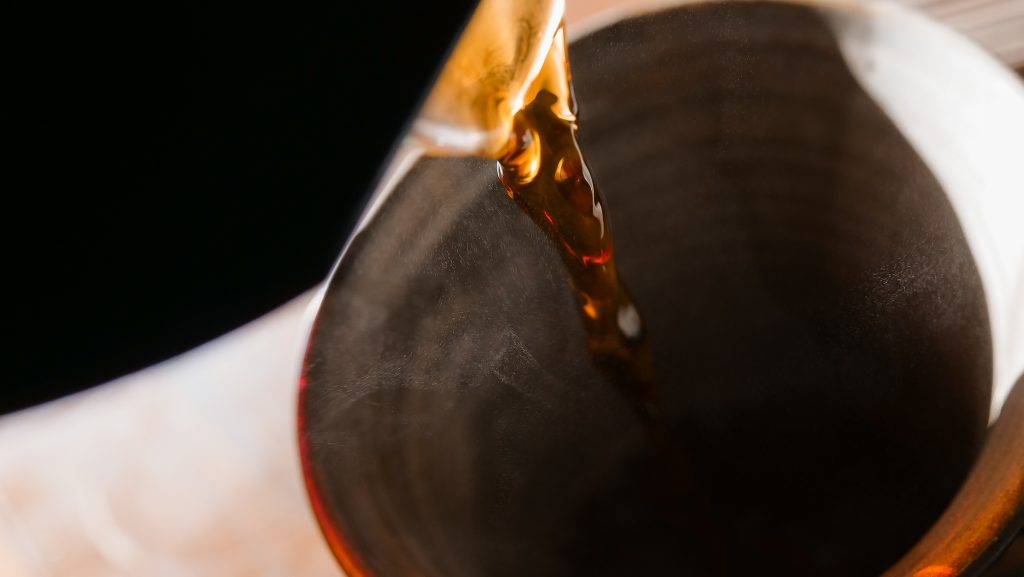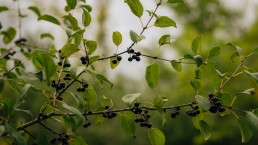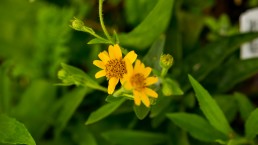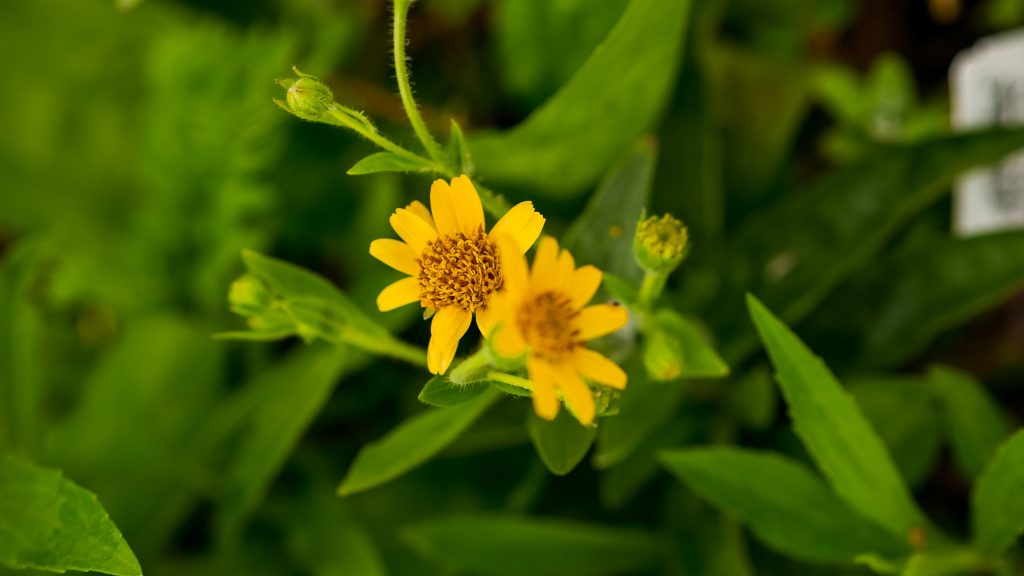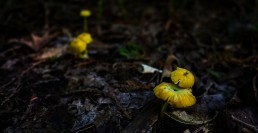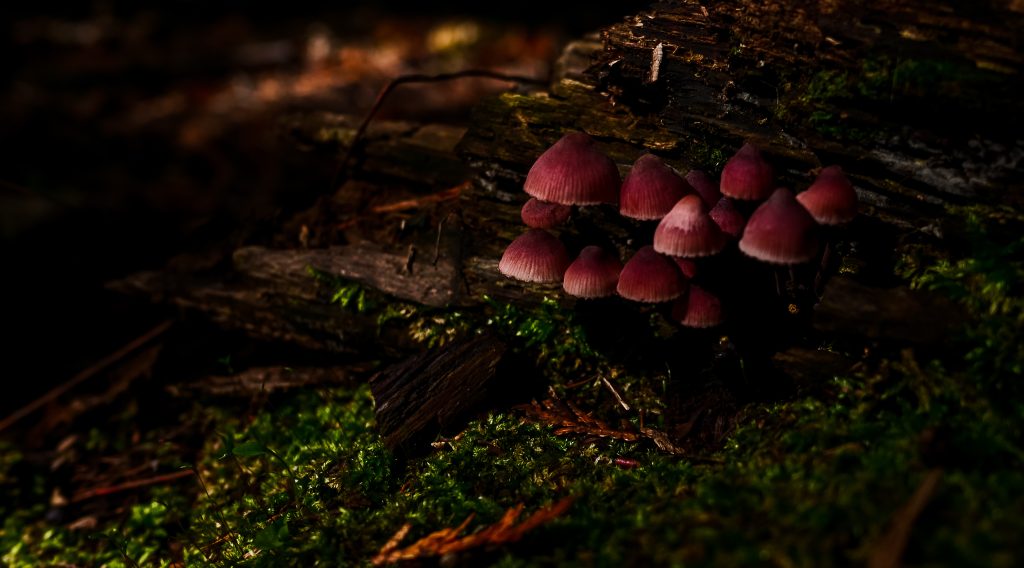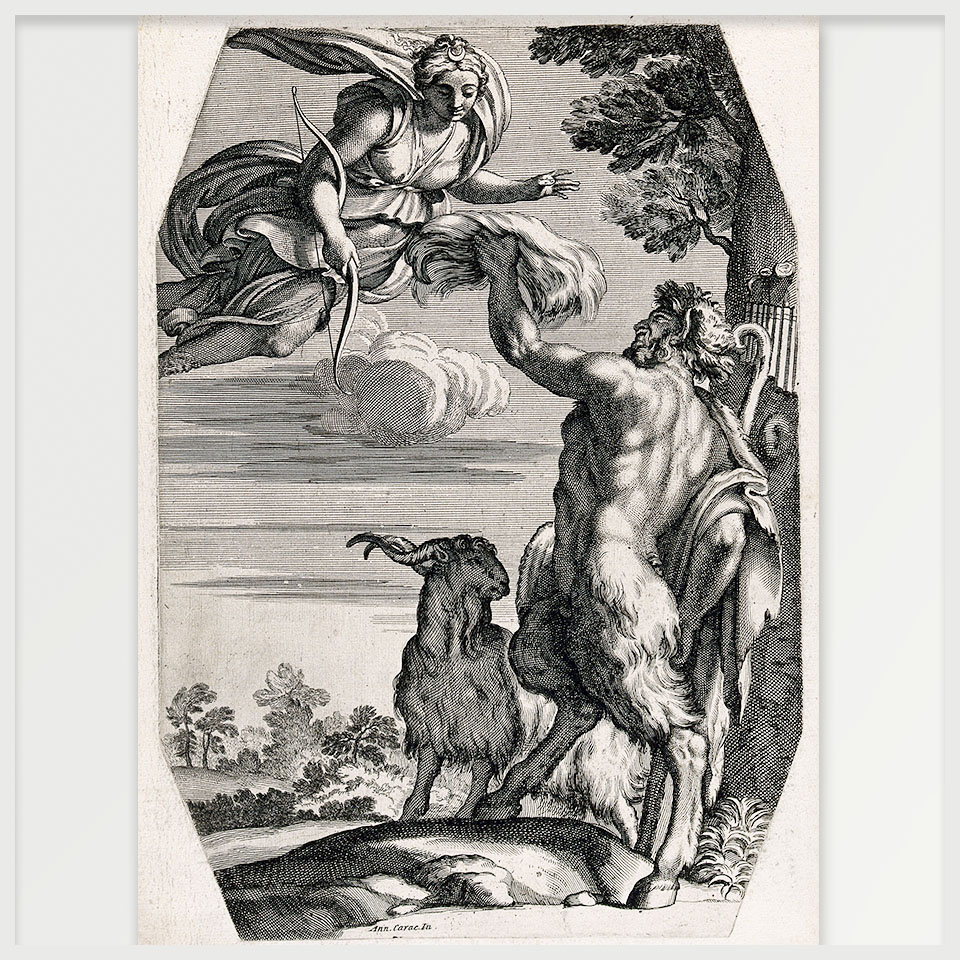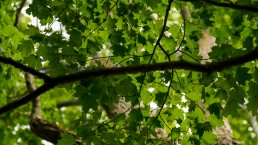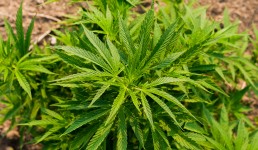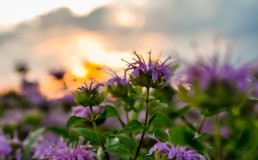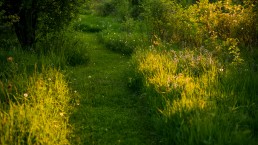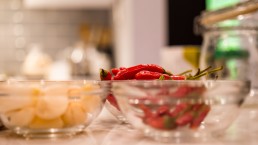Coffee: The Good the Bad and the Ugly
An Historic Global Enterprise
Coffee is one of the most ubiquitous and widely consumed beverages in the world, second only to water. The already extraordinary demand for coffee only seems to be increasing; global coffee production reached 175.35 million 60-kilogram bags as of 2020/2021, increasing from about 165 million 60-kilogram bags in 2019/2020.
Coffee drinking, and the knowledge of the coffee tree as a medicinal substance, dates back to at least the mid 15th century, where we find our first credible historical evidence pertaining to its use in the accounts of Yemini author Ahmed al-Ghaffar. The coffee tree was most likely introduced into Yemen by way of trade routes with Ethiopia from across the Red Sea. Thus, given that the coffee tree was being traded and exported from Africa, it is highly unlikely that its medicinal, recreational, and social values were only realized in the 15th century, in a country where the tree itself was not native. The use of coffee almost certainly reaches back much further than the 15th century, though specifics concerning its initial discovery by the peoples of the African continent and its use in their traditional systems of medicine and culture remain obscure.
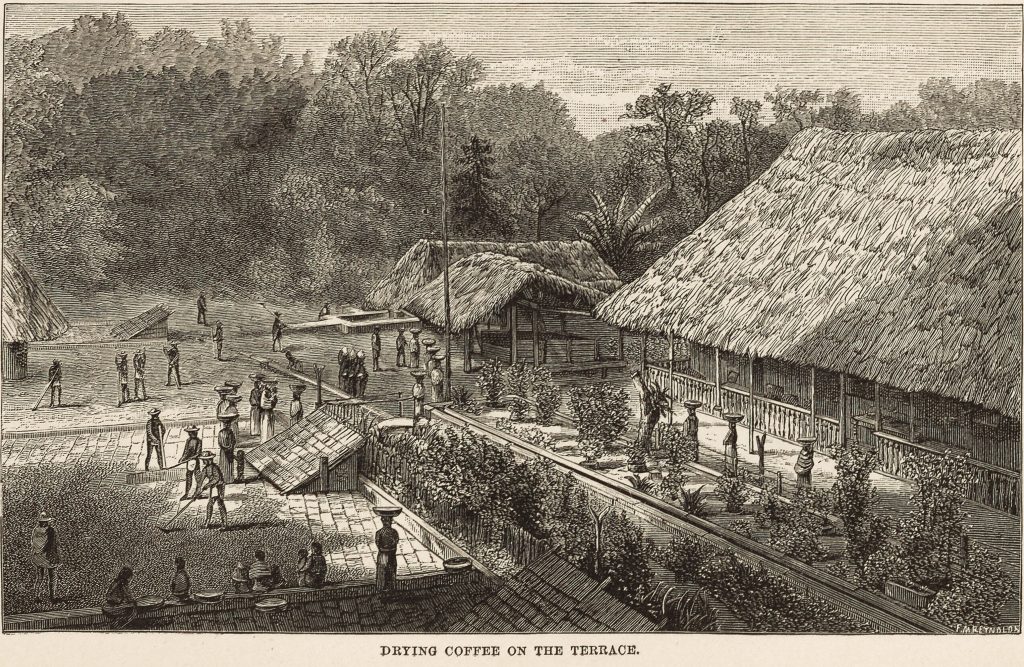
When it comes to the earliest detailed historical records concerning the use of coffee, we can look to the work of Harvard historian Cemal Kafadar, where it is revealed that the social significance of coffee in Islamic society was established by way of its use in Sufi religious rituals:
“To turn to the early history of coffee and coffeehouses, more specifically, there must have been many instances when coffee was consumed as a plant found in the natural environment of Ethiopia and Yemen, but the earliest users who regularized its consumption as a social beverage, to the best of our knowledge, were Sufis in Yemen at the turn of the fifteenth century. Evidently, they discovered that coffee gave them a certain nimbleness of the mind, which they were keen on cultivating during their night-time vigils and symposia. Thus started the long history of the appreciation of coffee as a companion to mental exercise and conviviality, particularly when one wished to stretch or manipulate the biological and social clock.”1
The Start of The Coffee House Phenomenon
It is from this point onward that coffee houses started to appear across Arabia and gradually, over the next three centuries, throughout the rest of the world. The historical significance of the coffee house is inextricably bound up with the historical significance of coffee itself; the coffee house has always served as a kind of public institution and cultural hub through which all manner of information – from the common and mundane to the revolutionary and political – was shared and disseminated amongst the population. Even today, in a world increasingly characterized by digital identities and disembodied forms of social engagement, the coffee house still serves as a place of respite, where people can turn for a semblance of embodied interpersonal interaction and exchange in an evermore alienating and depersonalizing world.
Coffee’s appearance in Europe (especially England and Germany) in the late 17th century coincided with the discovery that clocks could be controlled by harmonic oscillators. This was followed in the 18th century by a series of technological discoveries and breakthrough inventions that lead to increasingly precise clocks, and hence to a heretofore unimaginable regimentation of time itself. Is it a mere coincidence that coffee – utilized by so many for the purposes of maintaining attention and increasing stamina – came to Europe just as machine production and the Industrial Revolution, with the inhuman demands it placed on workers, led to a decline in hand production and the artisanal trades of the past? From the perspective of cultural history, coffee has a dual identity; as a tool for social conviviality and the free flow and exchange of ideas (exemplified by the institution of the coffee house), as well as a crucial ingredient in the engineering of the industrial worker, allowing for the kind of over-stimulation that is required to meet the demands of the fast paced, mechanized world of industrial society. The hegemony of standardized clock time, and the counting of seconds, minutes and hours as measures of productivity and profitability, violated the natural diurnal rhythms that human beings had always used to orient their lives. The question remains as to the extent to which coffee played a role in one of the biggest cultural shifts in recorded history.
Historical Religion and Politics
The opinion of the medical profession with respect to coffee has been divided throughout history. Coffee is exemplary when it comes to demonstrating the degree to which medical opinion can be deeply influenced and shaped by cultural and political trends and assumptions. Indeed, the medical, socio-political and religious views of coffee were at times inextricably bound up with each other, making it next to impossible to disentangle one from the other. Where does religious belief end and medical “fact” begin? We can explore this issue by taking a closer at the early history of coffee in the Islamic world, and the changing tide of opinion with respect to the most influential and powerful drink in the world, next to water itself.
In contrast to the view that the introduction of coffee into liturgical practice was a great blessing in that it allowed worshipers to better execute their devotions to God, other religious scholars argued that coffee should be outlawed insofar as it had never been mentioned in the Quran. Many of these scholars were also concerned about what they perceived to be the deleterious health consequences of coffee consumption. But this controversy is even further muddied when we stop to consider the political climate of the time. While some commentators argue that the various attempts to outlaw coffee in the Islamic world were a consequence of religious and medical opinion, the truth is more likely that coffee (and the social revolution spurred by the birth of the coffee house) was perceived as a political threat.
“Between the early 16th and late 18th centuries, a host of religious influencers and secular leaders, many but hardly all in the Ottoman Empire, took a crack at suppressing the black brew. Few of them did so because they thought coffee’s mild mind-altering effects meant it was an objectionable narcotic (a common assumption). Instead most, including Murad IV [the Ottoman sultan who issued a ban on coffee in 1633], seemed to believe that coffee shops could erode social norms, encourage dangerous thoughts or speech, and even directly foment seditious plots.”2
In what is perhaps an unexpected twist, our brief survey of the cultural and political history of coffee has revealed the extent to which many of our deeply held assumptions, sometimes taken as objective fact, in actuality rest upon a socio-political and theological underpinning of opinion and currents of dogmatic belief which colour our perception, of which we may be mostly or even totally oblivious.
PART II: Coffee as Medicine, Coffee as Poison
What is the difference between a food and a medicine? In his essay from 1803 titled ‘On the Effects of Coffee’, Samuel Hahnemann (the founder of homeopathy) set out to clarify this distinction and to warn of the deleterious effects of the unchecked consumption of medicinal substances, taking coffee as a paradigmatic example. Hahnemann writes:
“Medicinal things are substances that do not nourish, but alter the healthy condition of the body; any alteration, however, in the healthy state of the body constitutes a kind of abnormal, morbid condition. Coffee is a purely medicinal substance. All medicines have, in strong doses, a noxious action on the sensations of the healthy individual. No one ever smoked tobacco for the first time in his life without disgust; no healthy person ever drank unsugared black coffee for the first time in his life with gusto — a hint given by nature to shun the first occasion for transgressing the laws of health, and not to trample so frivolously under our feet the warning instinct implanted in us for the preservation of our life.”3
A medicine is a substance that serves to alter the state of health, whereas a food is a substance that serves to provide nourishment. When medicines are taken in excess, or when they are not properly indicated for an individual person, they can produce an abnormal or even pathological condition. Medicines can preserve life and maintain health, though they can also derange the state of health and take life away when they are given without the requisite attention or care. Food substances can likewise produce states of disease if they are eaten to excess, though the deleterious effects of foods generally take a much longer time to manifest when compared to the stronger power of medicinal substances to affect deep seated changes on the level of constitutional vitality.
While in 1803 Hahnemann condemned the use of coffee, going to so far as to argue that its unchecked consumption was the origin of many of the chronic diseases that plagued humanity, he later toned down his opinion, having developed a much more sophisticated theory of the origins of chronic diseases by way of the concept of the miasms (the 18th century precursor to our contemporary theories of epigenetics, and one of the philosophical foundations of homeopathic medical practice to this day). Nevertheless, Hahnemann was right to emphasize the extent to which medicinal substances, when treated as foods and consumed injudiciously, can exert profound effects on the state of health. This is especially true if conditions of heightened susceptibility to a given substance are at play in an individual’s constitution (think here of the example of severe allergic reactions to substances that to most people are extremely benign). Human response to coffee and to caffeine varies widely, and like any assessment of a medicinal substance, individual response patterns must always be given a higher regard than overly generalized, universal theories and pronouncements. The difference between a medicine and a poison is ultimately in the dose, and the effect of the dose is always weighed in relation to the individual to whom it is administered.
The Hahnemann of 1803 represents one extreme when it comes to thinking about coffee as medicine. A look at the medical literature on coffee, from from the 15th century to the present day, is full of contradictory and opposing points of view. Coffee was for centuries listed in the pharmacological and medical literature that herbal and Eclectic physicians relied upon, such as the Codex Medicus. Coffee remained classified as a medicinal substance in materia medica and pharmacopoeias until the twentieth century, when the use of natural medicinal substances was largely supplanted by the products of the petrochemical drug industry. Maria Letícia Galluzzi Bizzo et al. recount some of the claims made about coffee in the medical traditions of the West, emphasizing and siding with the view of coffee as a universal elixir of health (the poplar opposite of Hahnemann’s position):
“As a panacea, coffee has been prescribed as infusions, capsules, potions, or injections against a vast spectrum of diseases— from hernias to rheumatism, from colds to bronchitis. In the first half of the nineteenth century, medical controversies underlined the therapeutic use of caffeine in chronic conditions such as heart and circulation problems because of difficulties establishing the proper doses and the risk of toxicity to the heart. Nevertheless, the notion that such use would be safe prevailed. Recent research has opened new horizons regarding the use of coffee as a medicine, with discoveries of possible distinct preventive and curative applications of coffee’s substances.”4
The Coffee of Today
The medical opinions of the past are in many ways inadequate when it comes to judging the effects of coffee today. The coffee of the 1800s is not the coffee of the 21st century. Consider, for example, the question of pesticides. Only about 3% of the world’s coffee supply today is produced using organic methods, and we now know that the residues of pesticides found on coffee beans, one of the most pesticide ridden agricultural products in the world, are for the most part not destroyed by the roasting process. Many countries that produce coffee use pesticides that have been banned in North America and Europe over health and safety concerns, and a significant number of the countries which import this coffee do not have maximum residue limits (MRLs) when it comes to the pesticides that are used and can be detected on the harvested coffee beans.

Mold is yet another issue. When not stored in a temperature controlled storage facility, coffee beans are also highly susceptible to developing mold, which comes with its own host of long term adverse health effects. Even roasting techniques have a great bearing on coffee’s potential effects on one’s state of health. One study carried out by the International Association for Food Protection, for example, comes to the following ambiguous conclusion concerning the question of the carcinogenicity of coffee and how this is affected by the roasting process:
“Roasting coffee results in not only the creation of carcinogens such as acrylamide, furan, and poly-cyclic aromatic hydrocarbons but also the elimination of carcinogens in raw coffee beans, such as endotoxins, preservatives, or pesticides, by burning off. However, it has not been determined whether the concentrations of these carcinogens are sufficient to make either light or dark roast coffee more carcinogenic in a living organism.”5
There are a whole host of other socio-economic and political considerations that should be borne in mind with respect to the global coffee industry of the 21st century. Health is not a purely individual consideration; the health of your body and mind are indissociably bound up with the functioning of the larger natural and artificial systems in which you exist. We are unwitting participants in a global system of capitalist exploitation which, through the untiring impulses of profitability and expansion, inevitably leads towards the total degeneration of the natural world and the complete immiseration of its inhabitants. A sober and careful look at coffee and its economic, political, and agricultural ramifications, inevitably alerts us to a confrontation with this reality.
Capitalism, Globalization, and the Politics of Coffee Production:
The pesticide residues found in your average bag of coffee are inconsequential in comparison to the toxicity that third world coffee farmers are exposed to on a daily basis. These farmers, in addition to the dire health consequences of chronic chemical exposure that are an unavoidable part of their work, lead lives that are dictated by the brutal conditions of strenuous labour, physical exploitation and the inter-generational cycles of inescapable poverty, child labour and indentured servitude. Alice Nguyen, in an article written for The Borgen Project (a non-profit organization dedicated to addressing the global issues of poverty and hunger), unflinchingly encapsulates these issues:
“Growing coffee requires intensive manual work such as picking, sorting, pruning, weeding, spraying, fertilizing and transporting products. Plantation workers often toil under intense heat for up to 10 hours a day, and many face debt bondage and serious health risks due to exposure to dangerous agrochemicals. In Guatemala, coffee pickers often receive a daily quota of 45 kilograms just to earn the minimum wage: $3 a day. To meet this minimum demand, parents often pull their children out of school to work with them. This pattern of behavior jeopardizes children’s health and education in underdeveloped rural areas, where they already experience significant barriers and setbacks.”6
Facts like these seem to underlie the importance of Fairtrade and Organic Certification for coffee and related products, which in principle strive to ensure sustainable development, equitable trading conditions, and giving autonomy back to marginalized farmers and agricultural workers. However, consumers in the Western world must not fall into the self-congratulatory trap of thinking themselves morally superior because they are able to afford the often vastly more expensive Organic and Fairtrade Certified products that are simply outside of the economic reach of many. The reality is that, in many instances, the increased profits from organically grown coffee products do not reach the farmers and laborers themselves, but end up lining the pockets of the distributors, who in many regions of the world function in similar ways as do drug cartels.
What is more, there are the significant and rarely discussed pitfalls of introducing organic agricultural techniques to farmers who work on lands that have been treated with chemical pesticides for decades. Such agricultural land will require significant time and effort in order to be rehabilitated such that organic farming can be sustained there. This means that farmers who are already struggling to maintain their operations run the risk of falling even further into economic enslavement if they are coerced into adopting the organic methods that righteous and ecologically minded politicians, consumers, academics and other self proclaimed “experts” in the Western world preach about with moral fervour.
Consider the following story, told by the son of a soybean farmer working in El Toledo, Costa Rica. He recalls a childhood memory of the year his father was convinced by Penn State University professors to adopt organic agricultural techniques, under the promise of increased profitability and the ecological restoration of their farmland:
“The professors convinced my dad to make a wholesale change from conventional soybean farming to organic. They warned him that he might lose up to 15% of his yield, but that this would be offset by a number of factors: He could sell his soybeans for more, as they were organic. His soil would be healthier. He would spend less on chemical inputs, and thus save money. The reality was very different. Instead of losing 15% of our yield, we lost 50%. Instead of spending less money, he spent more: the gas he spent to tractor over the weeds alone outstripped his usual chemical spending.
He ended up taking a job in a factory to avoid bankruptcy. All I remember is that when I was eight, I never saw my dad: he was either weeding the soybeans or at the factory. As soon as that season ended, we went back to chemical farming.”7
Many such stories, pertaining to all manner of farming from all parts of the world, can be found if one cares to look beyond the ‘Certified Organic’ and ‘Fairtrade’ labels that one sees plastered on one’s favourite products lining the local supermarket shelves. From coffee and soybeans to chocolate and Brazil nuts and beyond, the exploitation of labourers and the degeneration of the world’s ecosystems are part and parcel of our contemporary agricultural systems of production, whether conventional or organic. Any consideration of “sustainability” must always be understood within the framework of the global capitalist economic system in which we exist. As the political and cultural theorist Mark Fisher so poignantly put it in his book Capitalist Realism: Is There No Alternative?:
“The relationship between capitalism and eco-disaster is neither coincidental nor accidental: capital’s ‘need of a constantly expanding market’, its ‘growth fetish’, mean that capitalism is by its very nature opposed to any notion of sustainability.”8
The preceding section of this article is not intended to inculcate feelings of guilt, a sentiment which only leads to a place of demoralization and further defeat. Rather, it was written out of an honest assessment of the situation in which we all find ourselves as consumers in a system which, in its vast complexity, far transcends the individual decisions that you and I make on a daily basis. It is only from a place of sober awareness that a genuine desire for a better world can be nurtured and allowed to bear fruit.
And now, with these economic, cultural and political factors in mind, let us turn to consider the detailed effects of coffee from a more purely medical perspective. A well rounded discussion of coffee requires that we adopt a multi-perspective view. Single vision is, after all, what the capitalist system of exploitation itself is based on.

PART III: Coffee’s Medicinal Effects: What Can Reliably Be Said?
Coffee is a nervine stimulant, i.e. an herb that causes excitation and stimulation of the nervous system, specifically by engaging or heightening the activity of the sympathetic nervous system. The most widely known and discussed function of the sympathetic nervous system is the mediation of the neuronal and hormonal stress response pattern known as the fight-or-flight response. The sympathetic nervous system is what allows the body to quickly react and respond to situations of threat and danger, to situations that threaten survival. But the sympathetic nervous system cannot be adequately understood if we look at it as an isolated regulatory or physiological function. The sympathetic nervous system works in concert with the parasympathetic nervous system and together make up what is called the autonomic nervous system. The autonomic nervous system regulates and controls many of the functions of the body’s internal organs. When we consider the interdependence and co-functioning of the sympathetic and parasympathetic nervous systems, then we can begin to understand that the stress response typically associated with the sympathetic nervous system is one pole or extreme of a greater homeostatic controlling mechanism which oversees the feeling and function of the human organism on many levels.
However, excessive stimulation of the sympathetic nervous system can and does result in undue consequences. Herbalist David Hoffmann explains the action of nervine stimulant herbs, and relates their functions to the excessively heightened states of excitation that characterize the frantic and overwrought patterns of 21st century existence:
“Direct stimulation of nervous tissue is not often needed in our hyperactive modern lives. In most cases, it is more appropriate to stimulate the body’s innate vitality with the help of nervine or bitter tonics. These herbs work to augment bodily harmony, and thus have a much deeper and longer-lasting effect than nervine stimulants. In the 19th century, herbalists placed much more emphasis upon stimulant herbs. It is, perhaps, a sign of our times that the world now supplies us with more than enough stimulation. When direct nervine stimulation is indicated, the best herb to use is Cola acuminata, although Paidlinia cupana, Coffea arahica, Ilex paraguayensis, and Camellia sinensis may also be used. One problem with these commonly used stimulants is their side effects; they are themselves implicated in the development of certain minor psychological problems, such as anxiety and tension. Some of the volatile oil-rich herbs are also valuable stimulants. Some of the best and most common are Rosmarinus officinalis and Mentha piperita.”9
Caffeine is the most widely recognized and studied active ingredient in coffee as well as many other stimulant herbs (such as those listed in the above quotation). But coffee also contains a wide array of other important constituents such as tannins, fixed oils, carbohydrates, and proteins, which should not be forgotten, as coffee, just like all herbs, are irreducible to their component parts. It is through the roasting process that caffeine is liberated from the raw coffee bean. Caffeine produces diuretic and stimulant effects, specifically on the respiratory, cardiovascular and central nervous systems.10 Caffeine is also an analgesic adjuvant, and hence is incorporated into a wide number of proprietary aspirin and acetaminophen preparations.11 Coffee also contains phytoestrogens, which have been subject of a great deal of scientific debate. Phytoestrogens can play a role in addressing symptoms and conditions caused by estrogen deficiency, which may be especially pronounced in premenopausal and post-menopausal women. They are also implicated in memory and learning processes and have been shown to possess anxiolytic effects. The research into the effects of phytoestrogens on human health is still ongoing, and is a fruitful and fascinating area of research. For example, consider the fact that the consumption of beer, bourbon, mescaline, cannabis, and coffee all produce phytoestrogenic effects – the relationship between psychoactivity and phytoestrogenic compounds certainly needs to be more deeply explored!
When it comes to consider possible contraindications and adverse reactions from coffee consumption, we should note that coffee, along with fried and fatty foods, chocolate and alcoholic beverages, can lead to or serve to aggravate LES dysfunction (the lower esophageal sphincter, which links the esophagus and the stomach). Obesity, pregnancy, cigarette smoking, and a structural weakness of the diaphragm known as hiatus hernia can also contribute to a weakening of the LES. If the LES fails to properly close, stomach acid can easily splash up from the stomach into the esophagus, leading to severe acid reflux and heartburn. Gastroesophageal reflux disease (commonly known by the acronym GERD) is associated with a leaking of stomach contents back into the esophagus. When there is a prolonged period of LES dysfunction, this can lead to acid and chemical damage of the esophagus, that is, to GERD.
The consumption of coffee and other caffeine containing substances can also result in headaches. The headaches that are associated with coffee consumption are often related to caffeine dependence, which can lead to significant withdrawal symptoms in some individuals. As Hoffmann writes:
“Caffeine can cause headaches by increasing the body’s expectation for it. When blood levels of caffeine drop, symptoms of withdrawal, including headache, may set in. That’s why some heavy coffee drinkers experience “morning headache” until they have that first cup of coffee. Caffeine headaches are usually experienced as a dull, throbbing pain on both sides of the head. Once the body rids itself of caffeine, the headaches disappear on their own. Such headache sufferers, however, are often unaware that their problem is due to caffeine and will continue to drink coffee, ensuring that the problem will recur.”12
We can look to the homeopathic literature to round out our consideration of the spectrum of effects that coffee can have. In homeopathy, the medicinal effects of a given substance are elaborated through clinical experience as well as through provings. A proving entails rigorous and detailed observation of the effects of a substance when administered at a sufficient dosage in its crude form and/or as a dynamic or potentized medicine (having been subjected to serial dilution and succussion or vigorous shaking), such that it produces modifications to the state of a person’s health and disposition. The fundamental principle of homeopathic prescribing is that like treats like. In other words, if a substance can cause a certain symptom on the physical, mental/emotional, or dispositional level in a relatively healthy person, then it can in like manner work to treat those same symptoms when they are expressed by a patient who comes seeking care.
Dutch Homeopath Jan Scholten describes the essence of the patient needing potentized coffee (Coffea Arabica) in the following way:
“Coffea is the ideal intellectual worker. They feel stable, focused and self-confident in their mind… They are independent and responsible, following their own plans.”13
The coffea patient often possess a great deal of stability, they are responsible, hard working, persevering, and their actions are well organized and carefully planned. Coffee in its crude form can serve to promote these qualities in people, so it is no wonder that many rely upon it in a culture which emphasizes work, productivity, and efficiency. Scholten explains that the mind of the coffea patient can be active and full of ideas. They can have clear, active, and lucid thoughts, are fast and easy learners with great comprehension skills. They can experience a rush of thoughts, a heightened sense of judgment and sharp and acute states attention. They tend to be quite ambitious people, with a strong and even overpowering need to achieve. They can feel that they must work as hard as possible to fulfill their own expectations, as well as the expectations of their parents (especially the father). Given the great demands that they place upon themselves, and the seriousness with which they approach their assigned tasks and responsibilities, the coffea patient can experience states of pronounced nervous agitation, excitement, exaltation, hilarity, restlessness and irritability – think of the states associated with and over-excitation of the nervous system.
Oversensitiveness is a keynote of this remedy, and all of the senses – sight, hearing, smell, taste, and touch – can be greatly heightened. Eating and drinking are things that they do quickly and in a hurried way, as befits their general tendency towards restlessness, hurry, and hyperactivity. The coffea patient may also be the type of person who feels that they cannot live up to the pronounced and unrelenting demands and expectations that they are faced with, and hence suffer from a lack of self confidence, which is improved through the use of stimulants. They feel things intensely, and can have a tendency to exaggerate their emotions and be highly susceptible to the impressions to which they are exposed. Emotional excesses, from extraordinary states of pleasure, optimism, and joy (coffea is a remedy for ailments from excessive joy) to the polar opposite of pronounced despair and despondency, with sharp anger and rudeness. When in this latter state, they can throw everything away, disposing of all that they have been given – in contrast, they can also be excessively clingy, and want to desperately hold on to people and their possessions. They feel pain intensely, and their anguish can run deep. Coffea can have the following delusions: “paradise, magnificent grandeur, beautiful world, heavenly scenes.” They experience states of benevolence and idealism, with a desire to perform good deeds, and veneration for the Supreme Being. Coffea may be prescribed for “ailments from vexation, mortification, frustration; discords between relatives, friends; hurry; anticipation; sudden emotions, pleasurable surprises.” The treatment of a variety of headaches, neuralgic pains and spasmodic afflictions, heart palpitations, digestive disturbances, and states of insomnia may also be addressed with coffea.
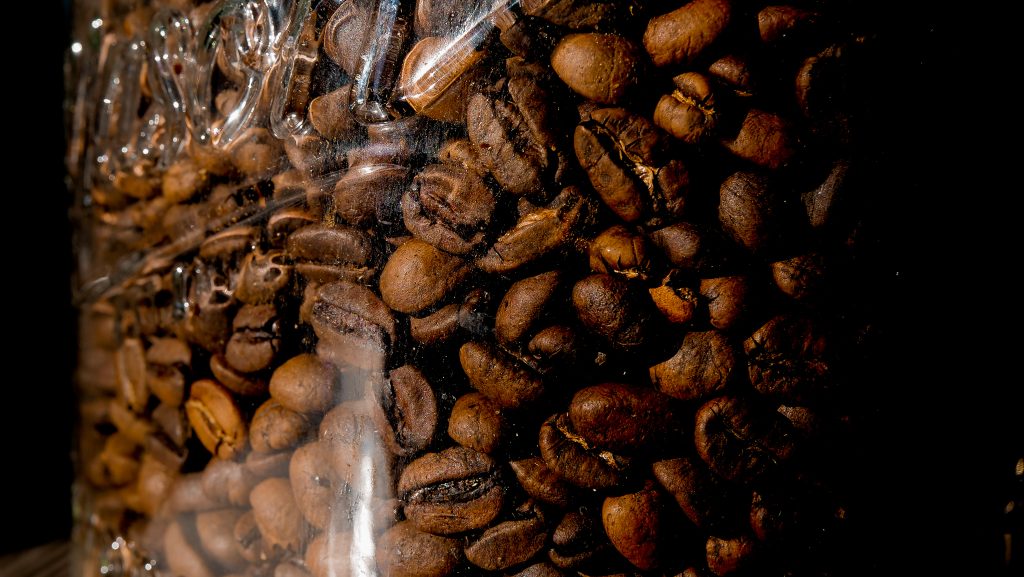
In Conclusion…
From our explorations into all things coffee, we may conclude that it is, perhaps more than any other substance in existence, paradigmatic of the culture of modernity. From controversies regarding altered states of consciousness to the regimentation of life brought about through the reign of clock time, from the exploitation of agricultural workers in the 3rd world to meet the needs of the Western consumer to controversies in the medical profession concerning the difference between medicinal and poisonous substances, coffee is both practically and symbolically encoded with many of the most pressing concerns of the culture of modernity. Our investigations into coffee have served to reveal the myriad ways in which everyday substances are always already embedded within and serve to reflect the complex cultural, economic, and political realities in which we exist. The tremendous extent to which plants play a role in shaping human culture through modification of the patterns of human thought and behaviour has also become clear. We have long ago reached the point that our world would be unrecognizable without coffee.
Footnotes:
1 Cemal Kafadar. ‘How Dark is the History of the Night, How Black the Story of Coffee, How Bitter the Tale of Love: The Changing Measure of Leisure and Pleasure in Early Modern Istanbul’ in Medieval and Early Modern Performance in the Eastern Mediterranean, ed. by Arzu Öztürkmenand Evelyn Birge Vitz, lmems 20 (Turnhout: Brepols, 2014).
2Mark Hay. ‘In Istanbul, Drinking Coffee in Public Was Once Punishable by Death.’Atlas Obscura, May 22, 2018. https://www.atlasobscura.com/articles/was-coffee-ever-illegal
3 Samuel Hahnemann, The Lesser Writings Of Samuel Hahnemann, ed. and trans. R.E. Dudgeon. New York: William Radde, 1852. Pg. 392.
4 Maria Letícia Galluzzi Bizzo et al. ‘Highlights in the History of Coffee Science Related to Health.’ Science Direct, 7 November 2014. https://www.sciencedirect.com/science/article/pii/B9780124095175000024
5 Joseph Kim et al. ‘Safest Roasting Times of Coffee To Reduce Carcinogenicity.’ PubMed, 1 June 2022. https://pubmed.ncbi.nlm.nih.gov/35226750/#:~:text=Abstract,or%20pesticides%2C%20by%20burning%20off.
6 Alice Nguyen. ‘Bitter Origins: Labor Exploitation in Coffee Production.’ Borgen Project, 24 September, 2020. https://borgenproject.org/labor-exploitation-in-coffee-production/
7 Brian Stoffel. ‘Urban Elites, Organic Farming & The Hypocrisy of No Skin-In-The-Game’. 14 June, 2017.
https://medium.com/@stoffel.brian/urban-elites-organic-farming-the-hypocrisy-of-no-skin-in-the-game-b9f95b655686
8 Mark Fisher. Capitalist Realism: Is There No Alternative? Oregon: Zero Books,2009. Pg. 18-19.
9 David Hoffmann. Medical Herbalism. Vermont: Healing Art Press, 2003. Pg. 519.
10 Ibid, pg. 124.
11 Ibid.
12 Ibid, pg. 365.
13 Jan Scholten. ‘Coffea Arabica.’ QJURE (undated publication). https://qjure.com/remedy/coffea-arabica-2/
Illustrations/Images:
- Illustration: Novel “Coffee: From Plantation to Cup. A Brief History of Coffee Production and Consumption” 1881 [x]
- Photos provided by Serena Mor
Old Fence Rows and Buckthorn
Spring is Ever Drawing Nearer
My fingers are itching to be in the earth once more – to sow and plant — bringing me into a deeper connection with the Earth once more. Our seeds have all been delivered and our trees ordered, and we are already busy here on the farm. The sugar shack is getting a new wind break and the chainsaw is sharpened and ready to go. With the snows melted and frost still in the ground it is the perfect time of year to work away at controlling the invasive Buckthorn.
As many of you know, besides being a clinical herbalist, educator and tea blender extraordinaire (a tea nut to some), we are a botanical sanctuary member of United Plant Savers. Gifting back to the Earth, thankful for all she has gifted us, especially plant medicine. So, we have been busy planting and rewilding for over thirty years now. Our goal is to plant as many endangered and native medicinal plants and trees as we can each spring and fall.
Over the years, we have had a few comments about the non-native species growing and thriving on the farm, people encouraging me to consider digging them all out, eradicate the invasive species from the land.
(Invasive species: “An organism that is not indigenous, or native, to a particular area.”)
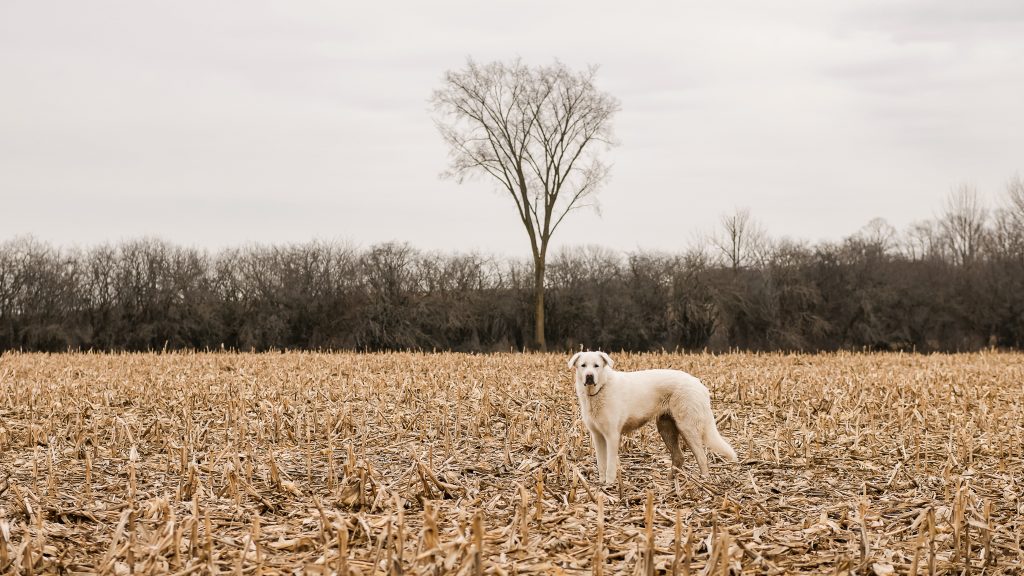
This is easy to say for a person who is not doing the ‘work’ or not possessing a strong love for all who grow and live on these one hundred acres of land. Do we cut down non-native trees, who’s limbs hold nests of baby birds? Do I pluck every Plantain plant from the land? Do we dig up the lilacs brought with the pioneers, that still grace this farmstead — reminders of days gone by? What about her fragrant blossoms that the pollinators seek out each spring? Think about the connection they have already formed to this land.
What about the invasive species that take over an area and swallow up what was there before? These I am trying my best to keep in check and harvest freely for medicine — Phragmites and Garlic Mustard, recently appearing. But Buckthorn is a different story – she has literally kept me awake at night – how do I handle this undesirable invasive small tree?
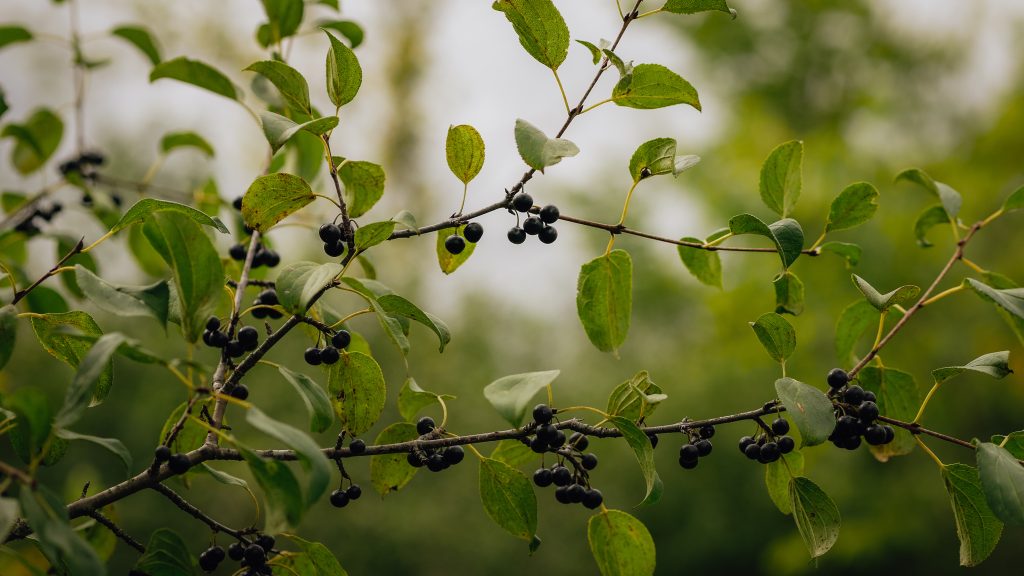
Description of Buckthorn:
Buckthorn’s main stem is erect, with bark smooth, of a blackish-brown colour, on the twigs ash-coloured. The smaller branches generally terminate in a stout thorn, giving it the name Buckthorn. There are many older names by which this shrub has been known: Waythorn and Highwaythorn. The leaves grow in small bunches, mostly opposite. They are egg-shaped and toothed on the edges, small greenish-yellow flowers are produced, which are followed by globular berries about the size of a pea, black and shining when ripe, and each containing four hard, dark-brown seeds.
Medicinal Action and Uses of Buckthorn
Laxative and cathartic.
The berries are used medicinally, collected when ripe and made into a syrup of Buckthorn, which was used as an aperient drink.
Until late in the nineteenth century, syrup of Buckthorn was a most favourite remedy, used as a children’s laxative, but its action was so severe that, as time went on, the medicine was discarded. It is now used almost exclusively in veterinary practice only, being commonly prescribed for dogs, with equal parts of castor oil as an occasional purgative.
Nature’s Wildlife Highway
Buckthorn was brought here with the European settlers as an ornamental bush and to line fencerows. Keeping livestock in and to serve as much needed windbreaks for the newly cleared land. Some people may only see Buckthorn when they look at these old hedgerows, but there, amongst their midst, if you look much deeper you will see the Birch, Wild Apple trees, Maples, Mountain Ash, Basswood, Aspen, Puff balls, Morels and blankets of our beloved woodland flower, the Trout Lily – which takes over seven years to receive her first bloom!
The hedgerows on our farm are over one hundred and twenty-five years old, deep within the bushes and trees are the remains of old rotting cedar zig zag rail fences, that once marked the property boundaries. These rails now offering homes for small critters and insects, slowly decomposing and feeding the soil, and nurturing the surrounding plant life. These fencerows provide wildlife with shelter and food, and well used trails for safe travel. Connecting the travelers to other fence rows and more trails. We can’t forget the help these hedgerows gift our pollinators as well, with over thirty Wild Apple Trees — all a blossom in the spring and a buzz with life. Providing rich pollen and nectar that our bees use for nutritious food and to make their honey. Many of these old fencerows are being cleared on neighbouring farms. Cleared for more workable land and giving the huge farm equipment of today more room to maneuver with ease. Saving the farmer’s valuable time, but at what cost to our wildlife?
Do I dare disturb this delicate ecosystem? Do I disturb the hidden trails within – taking the safety from the Deer, Coyote, Fox, Wild Turkey, Lynx, Fisher, Bear, and many other creatures who frequent these paths. Buckthorn has been a crucial part of the hedgerow, nurturing the young trees and plants. With connections like these the decision is easy, my intuition has always known, the Buckthorn filled fencerows will NOT be disturbed in any way.
This is my heartfelt commitment to this land.
“Look deep into nature, and then you will understand everything better.”
~ Hans Christian Andersen
Photos Provided by Serena Mor
Arnica: Materia Medica
Arnica and its Application
Arnica is an herb with a “strange history”, as herbalist Rudolf Weiss comments,
“It used to be very popular, being used internally as well as externally. It is said that the German writer, poet and scientist Goethe would ask for Arnica tea when in his old age he experienced anginal pain due to coronary arteriosclerosis” (Weiss: 1994, 169).
In fact, Goethe claimed that Arnica had saved his life. He sang the praises of Arnica, holding it up as an archetypal healing herb with associations to Helios (the all-knowing God of the sun, of prophecy, and of healing) and Asclepias (son of Helios, the caduceus wielding God of medicine, healing, and rejuvenation who oversees physicians and the practice of the healing arts amongst human beings). Goethe writes:
“Thus I assign Arnica to Helios among the gods. And among men? To the follower of Asclepias who wanders among the lonely heights. Here we have a plant of rapid healing, of firm decision. If you suffer violence and injury, from fist, cudgel or blade, wondrous healing is nigh in this herb. The vital energies are flowing, the pulse grows stronger, the heart takes courage; if the blood has lost its way in a bruise or an effusion, arnica will remind it of its proper courses. Muscles and sinews grow firm; the body form, having suffered insult and injury, is restored, and so is the nervous system where it is so difficult to achieve healing. The organic revolt at injury sustained — we call it pain — lessens and passes.”1
Topical Verses Internal Use
Despite Goethe’s praises, most contemporary authors and practitioners of herbal medicine warn of the dangers of the internal use of Arnica, though it is still widely used topically. The chief indications for the topical use of Arnica include bruises which have resulted from a fall, a blow, or other accidents, as well as poorly healing wounds and leg ulcers.
Weiss notes a traditional use of Arnica tea or tincture (5-10 drops per cup of water) as a gargle to treat sore throat and pharyngitis. “This was found to be most effective with chronic conditions where the circulation was poor in the pharyngeal region, particularly chronic granular pharyngitis, and for chronic smoker’s cough, giving symptomatic relief” (Weiss: 1994, 170).
Arnica provides some of its greatest curative effects in patients who suffer from poor circulation, given its special affinity for the vascular system. In this respect, Arnica covers some of the same clinical indications as does Hawthorn, specifically “senile hearts and coronary artery disease with or without angina” (ibid). Both Arnica and Hawthorn serve to improve the blood supply through the vessels of the coronary artery, though Arnica exerts a pronounced stimulating action in this region and as such is indicated in acute conditions, such as acute weakness of the heart, whereas Hawthorn is better suited for long-term use in chronic cardiovascular conditions such as coronary artery disease, atherosclerosis, and congestive heart failure.
In this author’s opinion, Arnica can and should be used internally by clinical herbalists who have been carefully instructed with respect to its specific indications and proper posology. The risks of the internal use of Arnica include gastric irritation, intoxication with dizziness, tremor, tachycardia, arrhythmia, and collapse (ibid). This is to emphasize the importance of working with a well-trained herbalist, especially when it comes to herbs that carry the potential for adverse events.
Arnica in Homeopathy
To further understand the healing actions of Arnica, let us turn now to homeopathy. Arnica is a very well-known and widely utilized remedy in homeopathic medicine. As in herbal medicine, Arnica is recognized in homeopathy as a remedy that has strong associations with physical trauma and is widely used in the treatment of acute injuries as well as chronic conditions that have resulted as a consequence of a blow, a fall, or some other significant affliction. Examples of such chronic conditions resulting from a significant injury can include: post-traumatic arthritis, neurological damage (e.g. post concussive syndrome), or even a variety of psycho-emotional and cognitive disturbances, such as depression, irritability, uneasiness, and nervous sensitivity. Arnica treats the effects of shock and trauma that have become impressed on the central nervous system.
Arnica, as noted in the above herbal indications, has a strong association with bruising, and is often called upon to help with the reabsorption of blood after surgery. It is always important to treat bruises: bruises create a condition that we can describe as ‘bad blood’, ‘stagnant blood’, or ‘congealed blood.’ This can, in turn, lead to cancerous conditions in the distant future. Put otherwise, where there are bruises on the body, the oxygen supply in the bloodstream to the affected area is compromised. Limited oxygen supply promotes the development and growth of tumours.
Homeopathic medicines are prescribed on the basis of the totality of a patient’s symptomatology, including the mental-emotional and even spiritual levels. The mental-emotional picture of the Arnica patient is someone who feels “bruised by life.” There can be a long history of emotional trauma and a life path that is characterized by difficult knocks and hard falls. This in turn results in a melancholic, morose, and withdrawn disposition. The Arnica patient can come off as standoffish and distant, as someone who dwells on their suffering and wants to be left alone with their pain. They may also be very obstinate and headstrong, unwilling to listen to the opinions and feelings of others. Arnica patients can feel at odds with the world, convinced that it is their fate to always be facing seemingly insurmountable obstacles. Such a patient may have a fear of being touched, and a fear of others approaching, lest she be touched. There may be a fear of death, especially as a consequence of heart disease or a sudden heart attack (this fear may be especially amped up during the night). There can be frightful dreams of being buried alive, of black cats, and of death, nightmares that can startlingly wake the patient from sleep, and which may have commenced after an accident or injury. The Arnica patient can be easily startled as a consequence of prior shocks that have become deeply set in the nervous system. This history of being beaten down and emotionally battered can give rise to chronic rheumatic and arthritic complaints, as well as a variety of skin eruptions and other painful conditions of the skin.
Footnotes:
1 Johann Peter Eckermann, a close associate of Goethe’s towards the end of his life, recorded a detailed account of Goethe’s profound healing experience with arnica in his book ‘Conversations Of Goethe’ (Eckerman: 1998).
References and Recommended Titles:
-
Eckermann, Johann Peter. Conversations of Goethe. Massachusetts: Da Capo Press, 1998.
-
Morrison, Roger. Desktop Guide to Keynotes and Confirmatory Symptoms. Grass Valley: Hahnemann Clinic Publishing, 1993.
-
Sharma, Yubraj. Spiritual Bioenergetics of Homeopathic Materia Medica. London: Academy of Light Ltd., 2019.
-
Weiss, Rudolf. Herbal Medicine. Gothenberg: Ab Arcanum, 1994.
Photos Provided by Serena Mor
Medicinal Mushrooms
An Ancient Medicine
The use of mushrooms as food and medicine stretches back thousands of years, and can be observed in every culture of the world. Recently, a growing body of scientific and clinical evidence has amassed which supports many facets of the traditional use of mushrooms as medicine. Mycotherapy – the science of healing with mushrooms – is fully incorporated into traditional Western herbalism, as well as Traditional Chinese and Japanese medical systems, where mushrooms have always been highly revered as powerful healing agents for a wide variety of ailments and illnesses ranging from acute to chronic. Dr. Walter Ardigò, physician and researcher specializing in mycotherapy, suggests that mushrooms have such a strong affinity for so many diverse disease conditions in the human organism because of their biological similarities to human beings:
“Medicinal mushrooms are more similar to human beings than to plants. Like human beings, they need oxygen to live, eliminate carbondioxide and have no absolute need for light. The two also have similar biological mechanisms, such as immunity, cleansing and elimination of excess fluids” (Ardigò: 2017, 20).
Fungi play innumerable essential roles in maintaining the health and functionality of the world’s diverse ecosystems. It may surprise you, but the largest living being on earth has been declared to be a 2,384 acre large mycelial network (of the species Armillaria ostoyae, also known as honey mushrooms) located in the Blue Mountains of the state of Oregon. Fungi are responsible for processes involving the transmission of information amongst living organisms; they do this by way of electrical impulses that are sent underground through long, thread-like structures called hyphae, which expand to form mycelial networks. Many plants rely on mycorrhizal networks, which facilitate symbiotic associations between plants and fungi. Mycorrhizal networks serve to connect plants together and transfer essentials such as water, carbon, nitrogen, and a host of other nutrients and minerals.
Fungi also play an absolutely pivotal role when it comes to natural processes involving breakdown, decay and regeneration (e.g. by way of returning nutrients to the air and soil). Fungi do no simply decompose, but more accurately work to recompose elements of the environment. Fungi thereby make possible many of the processes of natural evolution. Fungi can be said to occupy a middle ground between the living and the dead; they are what allow for the continuum of coming into being and passing away to exist in the first place. As mycologist Peter McCoy expresses:
“Along the border of living and dying, mycelia sense and digest, interpret and destroy. More visibly than the bacteria with which they work, the fungi walk between worlds, acting as custodians of the darkness. Some species are so intimately tied to decay that they primarily live and fruit from dead animal parts” (McCoy: 2016, 76).
The Power of Mushrooms
That fungi are “custodians of the darkness” is suggestive of the fact that, when used as medicine, mushrooms can be helpful in a wide variety of psycho-emotional disorders, including many varieties of anxiety and depression, trauma and grief. As we will see, mushrooms such as Reishi can help to bring our unconscious defense patterns to light, making the darkness conscious through the metabolization of emotional experience. Additionally, when we understand the role that fungi play in decomposition and regeneration, we can also begin to understand how and why medicinal mushrooms prove so useful in diseases such as cancer and opportunistic infections such as might be associated with HIV. Both of these conditions involve uncontrolled, proliferative growth that the body is unable to keep in check. Medicinal mushrooms act in such a way as to regulate the functioning of the immune system, keeping such pathological conditions in check or preventing their onset in the first place.
Many of our medicinal mushrooms act as adaptogens. In general, adaptogens serve to strengthen the natural defenses of the body, and help the body adapt to non-specific stressors (including physical performance and endurance, as well as psychological and emotional stress). Adaptogens have a normalizing or balancing effect on the whole organism, helping to promote equilibrium amongst different body systems and processes. Many adaptogens have a direct strengthening and rehabilitative effect on the adrenal glands, are known to help to regulate blood sugar levels, and to balance and stabilize hormone levels. Used in moderation, adaptogens are generally very well tolerated by most people and help to promote an overall harmonizing and tonifying effect on the body and mind.
Shiitake
Lentinula edodes
Shiitake is a well-known culinary and medicinal mushroom that has been used in Asian cuisine for at least 2000 years, with cultivation techniques originating in Japan about 700 years ago. The name “shiitake” is derived from the Japanese words “shii” meaning oak, and “take” meaning mushroom: suggesting that shiitake is the mushroom that grows on oak trees. Shiitake is the second most consumed mushroom worldwide, second only to agaricus mushrooms. In Japanese culture, shiitake is considered to be a tonic food substance which serves to increase energy, foster the resilience of the body, reduce the susceptibility to chronic degenerative diseases, aid in convalescence, and slow the aging and deterioration process.
Many clinical studies on Shiitake focus on its production of the beta-glucan lentinan. Beta-glucans are a type of fiber that has an affinity for promoting the health of the heart, regulating the function of the immune system, and balancing cholesterol and blood sugar levels (shiitake is known to be an excellent food for diabetic patients). Lentinan is a unique beta-glucan that is found in shiitake mushrooms, which has been given increasing attention in recent years due to its utility in assisting in the treatment of cancer and HIV infection. Many of the medicinal properties of lentinan relate to its ability to stimulate macrophages (a type of white blood cell in the immune system that engulfs and digests pathogens including cancer cells, foreign substances and harmful microbes), T-cells (which target specific foreign particles in the body), B-cells (an important component of the adaptive immune system), and NK cells (essential to the functioning of the innate immune system). Researchers have also focused on shiitake’s production of the polysaccharides LEM and LAP, which possess significant antitumor activity. LEM has been shown to stimulate the proliferation of a specific type of T-cell which can help to neutralize hepatitis and slow and prevent the rapid development of HIV infection. Shiitake possesses anti-viral and antioxidant properties, in part due to the presence of the essential trace mineral selenium. Selenium plays a role in many bodily functions, especially maintaining thyroid hormone metabolism and DNA synthesis, safeguarding the body against oxidative damage and infection. Shiitake is also useful in diseases of the intestine, respiratory tract, liver, bones and teeth. It has been called on for centuries as a household remedy to help treat flu and fever, coughs and colds and allergies.
There is a growing body of research on shiitake mushroom, which was the first mushroom to receive in depth research by modern scientists. As Ardigò explains:
shiitake “became renowned in 1964, after the Japanese health authorities decided to promote a series of epidemiological studies on the prevalence and distribution of the main chronic diseases throughout the country. The results revealed a very peculiar situation: in two areas of the country, disease was almost entirely absent, and the population was very long-lived” (Ardigò: 2017, 287)
The homeopath Massimo Mangialavori relates that:
“there are many myths and customs associated with shiitake. One belief is that this mushroom grows best in the company of other nurse logs, rather than by itself. Some say the mushroom is sensitive to the attitude of those who tend the mushroom: positive people allow it to flourish; disagreeable people discourage its growth” (Mangialavori: 2017, 263).
Maitake
Grifola frondosa
The general uses of maitake mushroom include the treatment of obesity (the alpha-glucosidase inhibitor contained in maitake decreases the amount of starch that is digested into sugar), diabetes type 1 and 2 (maitake lowers blood glucose levels and enhances insulin sensitivity), a wide variety of tumors but especially those of the stomach and lungs (maitake enhances macrophage activity in the body), leukemia, allergies, and HIV. Maitake has an affinity for conditions of the heart, including hypertension and high VLDL and HDL cholesterol levels. It is also known as a hepatoprotective mushroom, serving to enhance the overall health and functionality of the liver while simultaneously protecting it from damage. It is widely used in hepatocellular cancer and other pathological and chronic conditions that affect the liver, such as hepatitis.
Herbalist Richard Bray comments on the geography and preferred growing conditions of maitake and on the origin of one of its common names, hen of the woods:
“Maitake grows primarily at the base of oak trees in eastern North America, China, and Japan. This polypore mushroom starts as a small fruiting body, about the size of a potato, and when mature reaches up to 2-7 cm across. They grow especially big in Japan, often reaching 45kg. It is known as the “king of mushrooms” there with good reason! Maitake mushrooms grow multitudes of overlapping grayish-brown fronds, which give it the appearance of a hen sitting in the woods, hence the common name” (Bray: 2020, 48).
Lion’s Mane
Hericium erinaceus
Lion’s mane is most well known for its ability to induce brain tissue regeneration and to enhance perceptual capacities. If you look at either fresh or dried lion’s mane, you’ll observe that it appears structurally similar to the human brain and its nerve fibers – a clear example of the doctrine of signatures. Lion’s mane is used in the treatment of such issues as dementia, Parkinson’s, and diabetic neuropathy. The polysaccharides and polypeptides in Lion’s mane help to enhance immune function and have proven useful in stomach, esophageal, and skin cancers. Lion’s mane can pass through the blood-brain barrier and as such is quite valuable for targeting lyme disease spirochetes that have invaded the brain. Lion’s mane directs the spirochetes into the bloodstream where there’s a chance of them being eradicated. There are a growing number of studies that suggest the utility of lion’s mane in treating a variety of types of depression and mood disorders, including hormonally related anxiety disorders.
Indications from Traditional Chinese Medicine include memory disorders, difficulty concentrating, and a general picture of deficient cognitive function and abilities. Traditional Chinese Medicine also recognizes the use of lion’s mane in promoting and maintaining the health of the kidneys, heart, liver, lungs and spleen. It is thought to enhance overall strength and vitality, and facilitate ease of digestion. Ardigò comments:
“in traditional Chinese medicine it has long been used to treat diseases of the stomach, nervous system and nerves, to improve the immune system and to restore the natural strength of the body, because it has an important action in improving energy and cognitive functions. To highlight its many benefits for physical and cognitive activities, the ancient sages have even coined the saying “Hericium nerves of steel and the memory of a lion”” (Ardigò: 2017, 280).
Reishi
Ganoderma spp.
Lingzhi, the name given to ganoderma species in Traditional Chinese Medicine, literally translates as “Supernatural Fungus.” Reishi is also known as “The Mushroom of Immortality.” The physician and scholar Li Shi Zhen (1518 – 1599) wrote that reishi is:
“biter in taste, warm in nature, not poisonous, and replenishes the life energy, or qi of the heart. It increases intellectual capacity while nurturing the body, and banishes forgetfulness; taken over a long period of time, agility of the body will not cease; it keeps the body light and youthful like a celestial being” (quoted in Mangialavori: 2017, 284).
Reishi acts as a cardiovascular, lung, immune and nervous system tonic and restorative, improves circulation and oxygen utilization, promotes deep sleep and undisturbed thought patterns, generates a heightened sense of peacefulness, helps to process stagnant emotions held in the body, and deepens one’s trust in one’s own innate capacities and potentials. As Ron Teeguarden expresses it:
Reishi “calms the mind, eases tension, strengthens the nerves, improves memory, sharpens concentration and focus, [and] and builds willpower”, thus earning it the title “the Mushroom of Spiritual Potency” (Teeguarden: 2000, 88).
Reishi is a medicine that typically is best worked with over a longer period of time, having cumulative effects that gradually build the resilience of our nervous system and transforming the ways in which we relate to and perceive life itself. Reishi is highly esteemed as a medicine in virtually all of the cultures that have access to it, as Ardigò writes:
“Ganoderma, in fact, is known more or less everywhere, not only in Asian countries. For example, research shows that the indigenous peoples of Mexico used it in a number of diseases and in particular for heart disease, both for prevention and treatment” (Ardigò: 2017, 258).
In Traditional Chinese Medicine, reishi is considered to be a supreme Shen tonic, which is to say that it has a special affinity for the spirit, mind, and emotional body. Shen is considered to be the spirit that resides in the heart, or the heart-mind connection. Hence reishi’s reputation as an adaptogen involves its ability to teach us how to develop the inner resources with which we can navigate emotional and spiritual conflicts, and to confront and effectively work through a variety of psychological blockages and obstacles. Reishi has a long reputation in Daoist spiritual traditions as a medicine that promotes wisdom, longevity, groundedness and calmness. As a long living mushroom known to grown in old and mature forests, reishi carries with it the ability to connect us to the nature’s cycles of life, death and rebirth.
Reishi is not only useful for the emotional and spiritual levels of the mind, but also for sharpening cognitive and intellectual abilities and improving concentration and focus. Ardigò comments:
“Ganoderma has also been used at a mental and psychological level, to reduce lapses in concentration, to sharpen intelligence, to improve memory, to strengthen will-power, to relax a distressed and restless mind” (Ardigò: 2017, 258)
Other uses of reishi include: coronary heart disease, heart arrhythmias, feelings of tightness and constriction in the chest, chronic asthma and bronchitis, altitude sickness, vertigo, hypertension, high cholesterol, insomnia, diabetes, hepatitis, cancer, allergies, chronic fatigue syndrome and a variety of conditions involving chronic pain (Mangialavori: 2017, 284 – 285).
Looking into the Future
The future is bright when it comes to medicinal mushrooms. Every year, a greater number of people are becoming involved with the powerful medicine from the kingdom of fungi. From mushroom cultivation to mycoremediation (the use of fungi to help repair and restore damaged and polluted ecosystems), from the treatment of cancer and diabetes to complex emotional and psychological conditions, mushroom medicine can no longer be ignored. More than a passing trend, mushroom medicine is being shown, both by practitioners of natural healing and research scientists from around the world, to offer sustainable and lasting solutions to a wide variety of personal and social health problems. A great deal more will be revealed to us in the years to come as clinical and scientific exploration moves forward and continues to expand in novel and exciting directions.
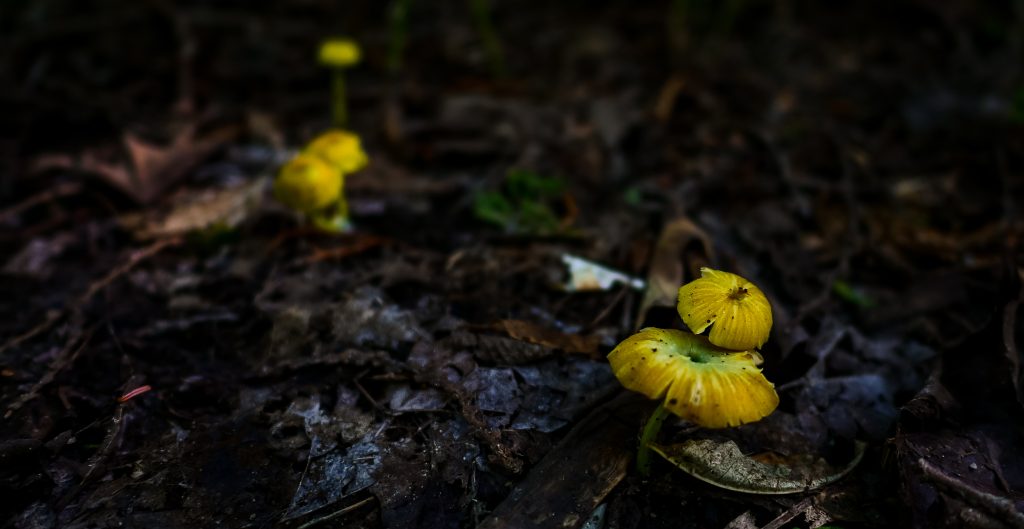
References and Recommended Titles:
- Ardigò, Walter. Healing With Medicinal Mushrooms: A Practical Handbook. Self published: 2017.
- Bray, Richard. Medicinal Mushrooms: A Practical Guide to Healing Mushrooms. Hamburg: Monkey Publishing, 2020.
- Mangialavori, Massimo. Materia Medica Clinica vol. 2: Fungi. South Carolina: CreateSpace, 2017.
- McCoy, Peter. Radical Mycology: A Treatise On Seeing And Working With Fungi. Portland: Chthaeus Press, 2016.
- Rogers, Robert. The Fungal Pharmacy: The Complete Guide to Medicinal Mushrooms and Lichens of North America. Berkley: North Atlantic Books, 2011.
- Sheldrake, Merlin. Entangled Life: How Fungi Make Our Worlds, Change Our Minds & Shape Our Futures. New York: Random House, 2021.
- Stamets, Paul. Mycelium Running: How Mushrooms Can Help Save the World. Berkeley: Ten Speed Press, 2005.
- Teeguarden, Ron. The Ancient Wisdom of the Chinese Tonic Herbs. New York: Grand Central Publishing, 2000.
Photos Provided by Serena Mor
Magic, Healing & Ritual: Herbal Tradition in the Italian Renaissance
Angels, Demons, Herbs and Magic
The ancient, and now largely lost and forgotten, tradition of illuminated herbal manuscripts can tell us much about the practice of herbal medicine throughout antiquity. It was not uncommon for such manuscripts to contain drawings of angels and demons, mythological figures and beings of the celestial hierarchies. Witchcraft and magic were taken to be very serious matters, not only when it came to cultural and religious belief systems, but also when considering the proper training of a physician. As one author writing on traditional Italian healing systems in antiquity has commented:
“Physicians were educated with the notion that drugs had occult powers to affect the body in special ways. It was common belief that demons invaded the soul, and that certain herbs had the property of chasing away devils and demons” (Silberman: 1996).
Expert Italian Renaissance physicians were required to be competent in astronomy and astrology “since the position of the celestial bodies contributed to the occult qualities of a medicinal herb” (Silberman: 1996). The Renaissance, as reflected in the writings of prominent philosophers of the time such as Giordano Bruno and Marsilio Ficino, saw a resurgence of pagan sensibilities. Renaissance thought and imagination embraced an animistic worldview that threatened the established, conservative branches of Christianity and their associated medieval superstitions. As the archetypal psychologist James Hillman writes:
“Renaissance animism led to pluralism, which threatened Christian universal harmony. For when inner soul and outer world reflect each other as enlivened souls and substances, and when the images of these souls and substances are pagan, then the familiar figures of Christianity diminish to only one relative set among many alternatives.”
This co-reflection or mirroring of the inner soul and the outer world are the life-stream of the ancient pagan and Renaissance herbal medical traditions of Italy and surrounding regions. This conception of a pluralistic world and of the enlivened human soul seen as a microcosmic reflection of the greater soul of nature helps us to understand the associations and correspondences that were made between particular herbs, supernatural, celestial, and divine beings, and the actions of the planetary bodies in the medicine of the time.
Medicina Antiqua Illustration depicting mandrake harvesting
Christianity and Paganism
In the Middle Ages there was much scorn for the Pagan worship of Goddess nature (who is synonymous with Venus or Aphrodite). This too is reflected in the medical manuscripts of the day. Consider, for example, the “editing” or erasure of an invocation to Gaia found in an early 13th century Viennese manuscript, Medicina Antiqua, by an unknown monk living sometime later in the Medieval period. The erasure in question was found on the back of an image depicting the invocation of the divine mother.
“She stands in classical clothing on the banks of a river in which the river god Neptune can be seen sitting with his trident on a snake. Mother Earth holds a cornucopia in her arms and is surrounded by stylized palms and fantasy plants.” (Müller-Ebeling: 2003, 184).
The fifty-one line invocation on the back of the image originally began “Sacred Goddess Earth, bringer of natural things…” but was changed to “To the Sacred God…” by the monk in question. In the 15th century, much of Northern Europe “fought hard for a reformation of the religious and moral foundations of spiritual life” but in sunny Renaissance Italy there was to be found an opening and renewal of the senses, a “rediscovery of classical sculptures of the gods as well as to texts that were bought from the cloisters by…Cosimo de’Medici” (Müller-Ebeling: 2003, 180).
Italian philosophers and artists of the time were concerned with understanding and exploring nature’s beauty and “the congenial side of the human character [was given much greater attention than was] the sinful” (ibid). A comparison of Germanic and Italian art of this period can be quite revealing; the former tradition is full of images of infernal hells (e.g. Hieronymus Bosch), the latter dedicated to an exploration of anatomy and perspective rooted in a renewed pagan grace (e.g. Leonardo, Raphael, Michelangelo). For confirmation of this claim, one can for example study the encoded pagan symbolism present in Michelangelo’s anatomical drawings.
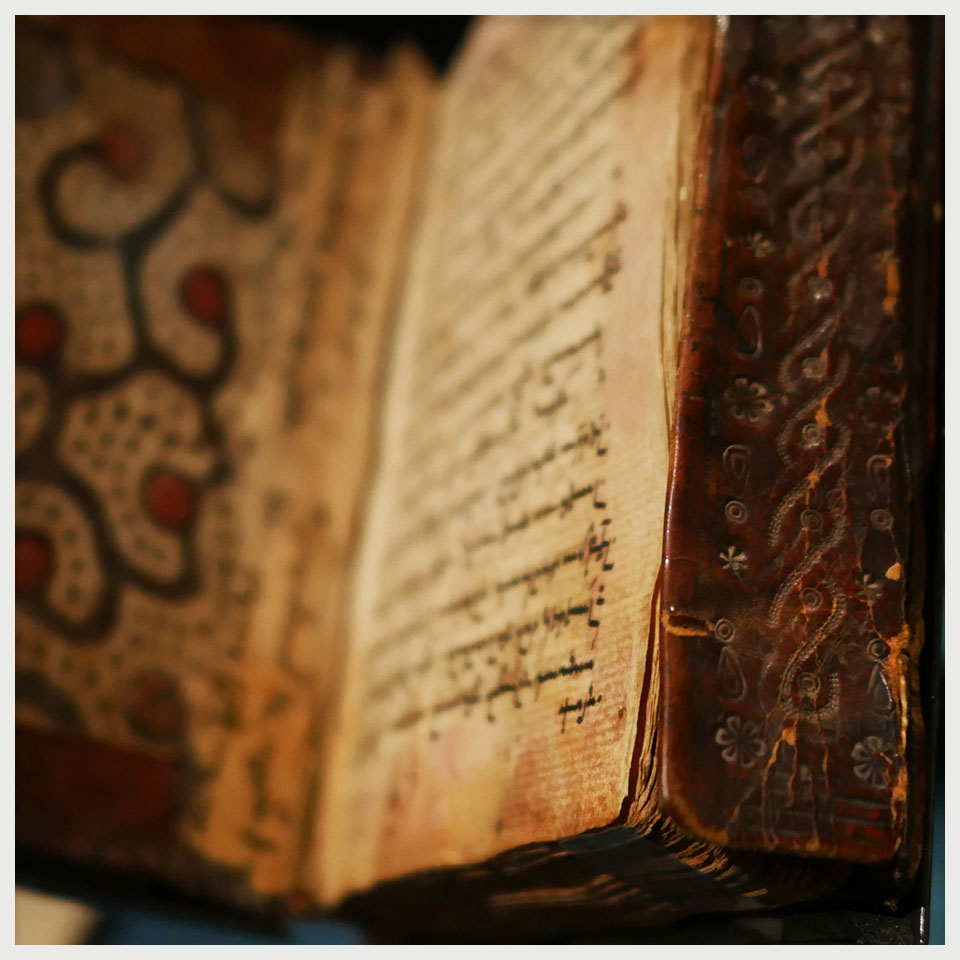
Pictured: 17th Century Bible
Given the church’s disdain for nature worship and resurgent pagan sensibilities, it is no wonder that Giordano Bruno, the Renaissance magi who considered medicine to be a branch of natural magic, was eventually burned at the stake for heresy (in particular, he was put to death for his belief in an infinite number of worlds). In his treatise De Magia Bruno provides a list of ten definitions of the words magic and magician. The one that especially interests us reads as follows: “Magician: someone who does wondrous things merely by manipulating active and passive powers, as occurs in chemistry, medicine and such fields; this is commonly called ‘natural magic’” (Bruno: 1998). For Bruno, the natural world and the divine world reflected and interpenetrated each other. To use and to understand herbs was to know, in the sense of gnosis, the action of divinity in nature; it was also to realize that through the work of learning to read the book of nature that one in turn serves to illuminate the divine:
“… for as the divinity descends in a certain manner inasmuch as it communicates itself to nature, so there is an ascent made to the divinity by nature, and so through the light which shines in natural things one mounts upward to the life which presides over them” (Bruno quoted in Yates: 1940, 183).
Bruno also gives us an insight into the common practice of using incantations and physical traces left behind by or belonging to a person to affect a cure or to set a curse in motion:
“Wicked or poisonous magic: incantations are associated with a person’s physical parts in any sense; garments, excrement, remnants, footprints and anything which is believed to have made some contact with the person. In that case, and if they are used to untie, fasten, or weaken, then this constitutes the type of magic called ‘wicked’, if it leads to evil. If it leads to good, it is to be counted among the medicines belonging to a certain method and type of medical practice. If it leads to final destruction and death, then it is called ‘poisonous magic’ (Bruno: 1998).”
Hellebore and Mandrake
Not all figures of the Italian renaissance shared the magical and animistic views of Bruno, and the more “rational” voices of the time thought that Bruno and his ilk were quite mad. But even among the more conservative authors, herbal medicine was still widely referenced and bound up with mythological associations. The famous poet Torquato Tasso took issue with Bruno’s worldview and in discussing his work quoted Erasmus’ phrase “Anticyram navigat”, literally ‘set sail for Anticyra’. Anticyra was a place that was known to contain an abundance of the herb hellebore (Veratrum album), then used as a cure for madness (Yates: 1940, 191)). Let us turn to consider this herb, and the related mandrake (Mandragora officinarum), both of which can serve to give us some insights into the practices and belief systems that existed in the Italian herbal tradition, especially the tradition maintained by the rhizotomes, or root diggers, the magician-herbalists of the ancient world.
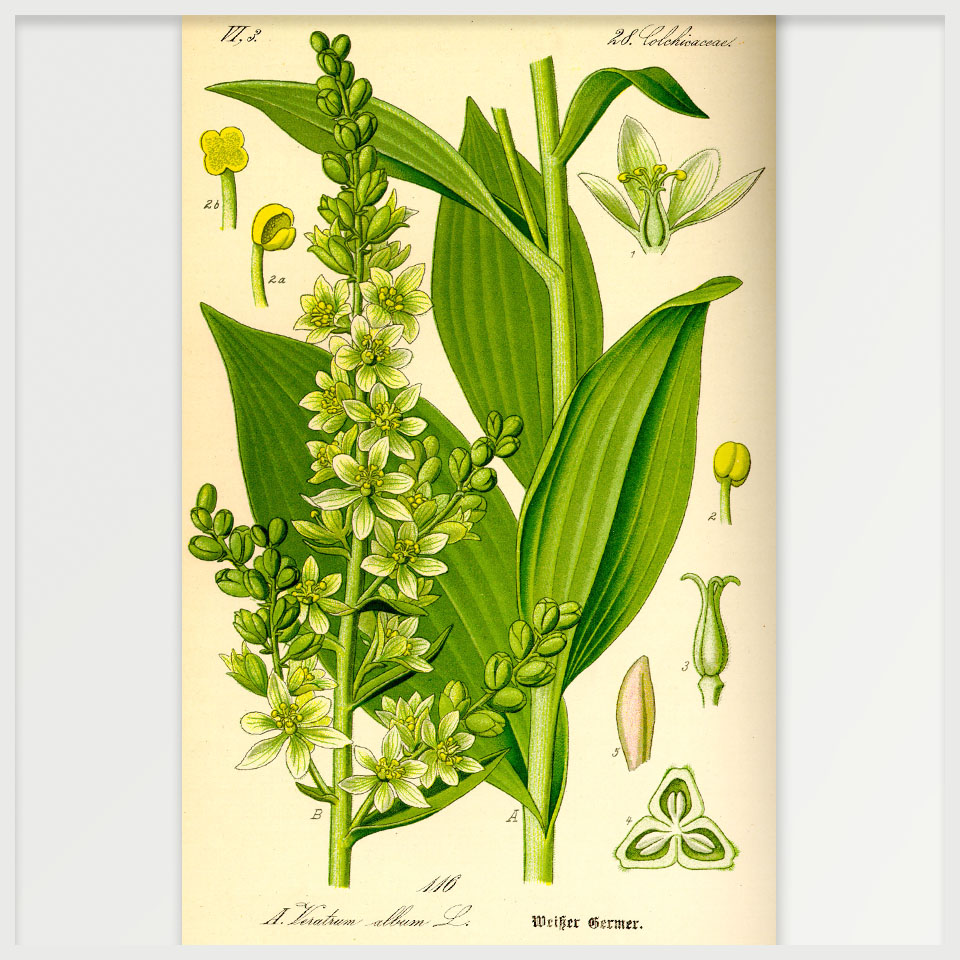
Hellebore (Veratrum album, white hellebore, veratro bianco in Italian); Helleborus niger, black hellebore) was a very important herb not only in ancient and renaissance Italy but also in Greece, France, and Egypt, among other places. Theophrastus maintained that the two types of hellebore were the most important medicinal plants that were used in ancient Greece and Rome. Contemporary ethnobotanist Christian Rätsch says of the hellebores: “they were the central medicines of the rhizotomes, diggers who nourished the magical plants with shamanic rituals. Hellebore was a sacred plant of the gods” (Rätsch: 2005, 525). Rätsch speculates that name helleboros is derived from hella-bora, which means “food of Helle.” The Hellespont is named after Helle who fell into this body of water after narrowly escaping death. Helle’s stepmother Ino resentfully roasted all of the seeds in the region of Boeotia so that a massive famine would result; this famine she blamed on Helle and her brother Phrixus, the stepchildren she so hated, in a ploy to have them killed. However, a flying golden ram sent by their birth mother Nephele saved these two. Helle fell from the ram into the Hellespont, where she was saved by Poseidon and metamorphosed into a goddess of the sea (in some less interesting accounts of the myth Helle simply drowned).
Rätsch argues that the most important documented use of this herb involved turning the root into a snuff. This is because “the artificially induced sneezing (the German name nieswurz means “sneezing root”) was believed to cause the demons of sickness to leave the body” (ibid). The Greeks and the Romans used the white hellebore1, which was ritually harvested in a way similar to the mandrake (Mandragora officinarum). Pliny gives a detailed account of the uses of white hellebore, which also gives us insight into the nature of medical treatment in the Rome of his time:
The body must be prepared beforehand for seven days by spiced food and abstention from wine, on the fourth and third day through vomiting, on the day preceding through fasting. White hellebore is also given in something sweet but is best in lentils or in a mush… The emptying begins after about four hours; the entire treatment is over in seven hours. In this manner, white hellebore heals epilepsy, …dizziness, melancholy, insanity, possession, white elephantiasis, leprosy, tetanus, tremors, foot gout, dropsy, incipient tympanic water, stomach weakness, charley horse, hip pains, four-day fever, if this will not disappear in any other way, persistent coughing, flatulence, and recurrent stomachaches (Pliny quoted in Rätsch: 2005, 527).
Consideration of the harvesting rituals common to hellebore and mandrake can give us interesting insights into the practices and beliefs of the rhizotomes as they engaged their art in Greek and Italian herbal traditions. The harvesting of these two plants involved many preliminaries and precautions. “Naturally a weird story of perils incurred in obtaining a plant strengthened belief in its magic powers and added to its commercial value” (Randolph, 489). Theophrastus describes the practices of the root diggers in his History of Plants, with specific reference to the mandrake: “Around the mandragora one must make three circles with a sword, and dig looking toward the west. Another person must dance about in a circle and pronounce a great many aphrodisiac formulas” (Theophrastus quoted in Randolph: 1905, 489). He also mentions the necessity of standing with one’s back to the wind so as not to be exposed to strong odours that some plants may emit, and anointing any skin not covered by clothing as a means of protection and defense. Other practices involved the “digging of certain plants only by night, [and] avoiding the sight of certain birds” (Randolph: 1905, 489). There were variations on these practices that depended on the plant being harvested and the uses for which it was intended. While the mandrake was to be dug up with one’s back facing west, hellebore was to be dug with one’s back facing east. Theophrastus notes that the practice of repeating aphrodisiac formulas as part of the harvesting of mandragora shows great similarities to the practice of repeating curses when sowing cumin seeds (Randolph: 1905, 490).
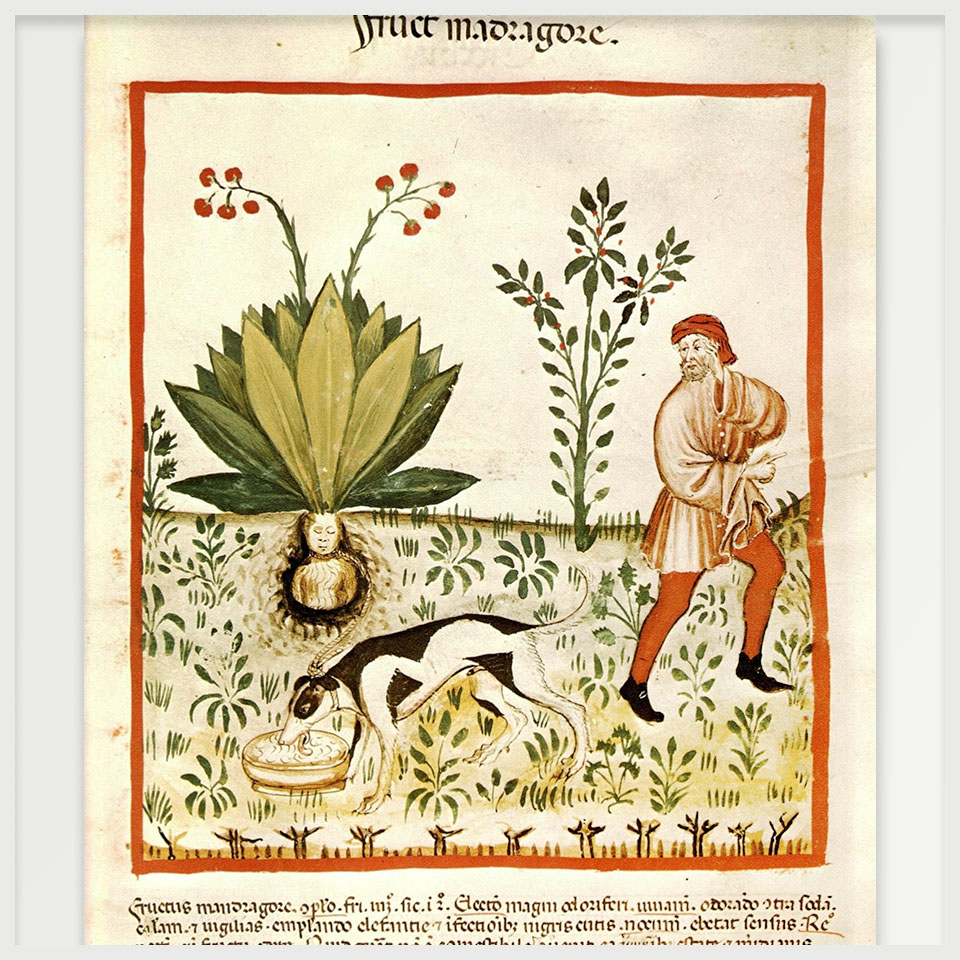
Mandrake Harvesting Illustrated in the Tacuinum Sanitatis manuscript, 1390
Pliny borrowed a great deal from Theophrastus and the account found in his Natural History of the practices of the root diggers and the harvesting of the mandrake in particular is one indication of this: “Those who are about to dig mandragora avoid a wind blowing in their faces; first they make three circles with a sword, and then dig looking toward the west” (Pliny quoted in Randolph: 1905, 490). We can notice however that Pliny says nothing of the “great many aphrodisiac formulas” that Theophrastus mentions in his account of the practices of the rhizotomes. Randolph suggests that “the omission by Pliny of any reference to aphrodisiac formulas is easily explained by his declaration that he will say nothing in his work about aphrodisiacs or magic spells except what may be necessary to refute belief in their efficacy” (Randolph: 1905, 490). This stance again speaks to the differences that existed in the ancient world between those who subscribed to the views and practices of natural magic and those who saw such a worldview as a breed of madness that must be rejected and defeated.
Aphrodisiacs were highly valued in Mediterranean herbal traditions, and one of the greatest of all of the aphrodisiacs was the mandrake. Rätsch comments that “in ancient times, the primary ritual significance of the mandrake was in erotic cults” (Rätsch: 2005, 348). However, only poor quality source material describing this usage remains and so detailed information about these practices is not available to us. Apart from its uses as an aphrodisiac, the mandrake was also widely used in medicine. Dioscorides:
A juice is prepared from the cortex of the bark by crushing this while fresh and pressing this; it must then be placed in the sun and stored in an earthen vessel after it has thickened. The juice of the apples is prepared in a similar manner, but this yields a less potent juice. The cortex of the root that is pulled off all the way around is put on a string and hung up to store. Some boil the roots with wine until only a third part remains, clarify this and then put it away, so that they may use a cup of this for sleeplessness and immoderate pain, and also to induce lack of sensation in those who need to be cut or burned themselves. The juice, drunk in a weight of two obols with honey mead, brings up the mucus and the black bile like hellebore; the consumption of more will take life away (Dioscorides quoted in Rätsch: 2005, 348).
The root diggers would only dig up the mandrake on the “day of Venus”, Venus of course being the Goddess of Love, which further suggests that one of the greatest virtues attributed to the mandrake in the ancient world was as an aphrodisiac, an agent in love magic/erotic rites (Randolph: 1905, 494). The mandrake is well known for its anthropomorphic appearance, and it is common in herbal traditions from around the world to attribute special healing powers to plants that resemble the human form (one can also think of the enormous sums that are paid in China even today for ginseng roots which look like human beings). Dioscorides and Pliny both make reference to a “male” and a “female” species of the mandrake but as Randolph clarifies “these terms, which the ancients applied to many plants, have nothing to do with sex, but signify more robust species (i.e., those having larger leaves, roots, etc., and attaining a greater height) and their opposites” (ibid).
The Goddess Circe
As we can see, herbal medicine in ancient and renaissance Italy, and throughout the Mediterranean region as a whole, was indissociably bound up with the workings of the gods and nature spirits. The Goddess Circe possessed a tremendous knowledge of herbs and, in particular, was regarded as a master of poisons (pharmaka). Her most famous plant was called Moly. To this plant were attributed psychoactive and aphrodisiac properties. Dioscorides referred to the mandrake as circeon, Mandragora Circaea being the herb that Circe used to transform Odysseus’ boat crew into “pigs.” (Müller-Ebeling et al. interpret this scene not in a literal sense but as an erotic transformation. The authors quote Apollonius: on the island of Circe “beasts, not resembling the beasts of the wild, nor yet like men in body, but with a medley of limbs went in a throng…such creatures, compacted of various limbs, did earth herself produce from the primeval slime…in such wise these monsters shapeless of form followed Circe” (Apollonius quoted in Müller-Ebeling: 2003, 117)). 19th and 20th century interpreters of the ancient literature (such as Dierbach and Kreuter) also take the Moly of Circe to be the mandrake. Theophrastus claimed that Circe lived in Lazio, a region in west-central Italy, where “the special medicinal herbs” were produced (Theophrastus quoted in Müller-Ebeling: 2003, 116). The sacred mountain of Circe, Monte Cicero, can still be visited today, on the Italian coast above Sicily. The early poet Aeschylus, according to Pliny, “declared that Italy abounds with potent herbs, and may have said the same of Circeii where she [i.e. Circe] lived. Strong confirmatory evidence exists even today in the fact that the Marsi, a tribe descended from Circe’s sons, are well-known snake-charmers” (Pliny quoted in Müller-Ebeling: 2003, 116).
Circe, goddess of death and guide of souls, was worshipped in groves. Apollonius notes that Circe’s groves, where executions were carried out, were lined with willows (Salix alba) and osiers/tamarisks (Tamarix spp.). Tamarisks and willows are well known medicinal trees. “The willow, or, more precisely, the white willow, was used for birth control; thus it was a typical witches’ plant” (Müller-Ebeling, 117). Two other plants sacred to Circe are the alder (most probably Alnus glutinosa) and juniper (Juniperus communis or Odorata cedrus, as it is recorded in Virgil’s Aeneid). Concerning the alder tree, it was said to surround Circe’s island (Aeaea or Eëa), located just south of Rome. Müller-Ebeling et al. comment:
“We can assume that there had been an archaic alder cult that by the Hellenic times had already been suppressed. Alders were considered transformed sisters of Phaeton, the son of Helios and brother of Circe” (Müller-Ebeling: 2003, 117). Juniper was Circe’s sacred incense and “therewith it is in the vicinity of archaic shamanism. Juniper is one of the oldest incense materials of the Eurasian shamans” (ibid).
Let us conclude our discussion of Circe by noting that though she has been described as compassionless and called the mother of darkness and horror, this noble sorceress was originally worshiped as a healing Goddess. As Giordano Bruno writes:
Ah, if only it pleased the sky, that for us today, like once long ago in happier centuries, this ever magical Circe would appear, who would be able to put an end to things with plants, minerals, poisons, and the magic of nature. I am certain, that despite her pride she was merciful with regards to our misery (Bruno: 1998).
Diana (Artemis) and Pan. Engraving after Annibale Carracci
What We Can Learn From This Symbiosis
To conclude, let us illustrate with another example just how bound up the practices of the healing arts were with the pagan pantheon of Gods and Goddesses – and consider how we can still learn from these sources of inspiration from the mythological imagination of the Renaissance. Consider Artemis/Diana, a woodland Goddess who served as the archetypal herbal healer throughout antiquity. She has very close ties to the animals of the forest, and oversees the wild hunt. Artemis is the goddess of the moon, the fierce protectress of the wild and of all of the life which courses through it, and it is she who governs the cycles of fertility and birth. Artemis’ garden is wild nature. Her role as a great shamanic healer is further brought to light through her representation as the “great she-bear, Ursa major, ruler of the stars and protector of the axis mundi (pole of the world) marked by the pole star at the centre of the constellation of Ursa Major” (Brooke: 1992). Artemis is closely associated with the artemisia plants, such as mugwort and wormwood (plants that help to enhance the clarity of consciousness, promote emotional resilience, and foster a refined sensitivity to and deepened awareness of our place in the world and our interactions with human and other-than-human nature). As explained in the Medicina Antiqua:
“There are three types of Artemisia. All three and their healing effects were discovered by the Goddess Diana. She transmitted this medicine chest to the centaur Chiron, who was the first to transform it into medicine. This is why these plants carry the name of Diana, or rather Artemisia” (Medicina Antiqua 13, fol. 32r).
When we read this and related sentiments, it becomes clear that without Artemis the tradition and practices of the Renaissance magi-herbalists would be inconceivable.
Healing was, in the Renaissance traditions here under discussions, associated with the qualities of grace and beauty. Artemis/Diana was said to be exceptionally beautiful, her beauty being comparable even to that of Aphrodite. Psychologist Ginette Paris suggests that Artemis sanctifies “solitude, natural and primitive living to which we may all return whenever we find it necessary to belong only to ourselves” (Paris: 1986, 124). In her capacity as a huntress and archer, she can bestow upon us the wild, atavistic power that can be utilized to resist the forces of domestication and domination. Artemis is the great protectress of flora and fauna, and thus she has a special bearing on the ecological issues that face living beings on the Earth today. It would be wise to look to her when making choices that will affect the future of the natural world.
“There are obviously many ways of entering into therapeutic contact with nature, but solitude and identification with nature through falling water, trees, or animals are cues that our contact is with Artemis rather than Dionysus, Demeter, or Aphrodite” (ibid, 127). The waters of the mountains and streams are also under the care of Diana, and if we are to re-enliven our sacred relationship to this elemental force then “perhaps, afterward, the nymphs, naiads, and nereids would return to inhabit our imagination and teach us the necessary respect for the waters of Artemis” (ibid). Let us not forget the mythological traditions of healing and the great bearing they can have on contemporary consciousness, let us take heed not to neglect the great Pagan wisdom of the wild imagination.
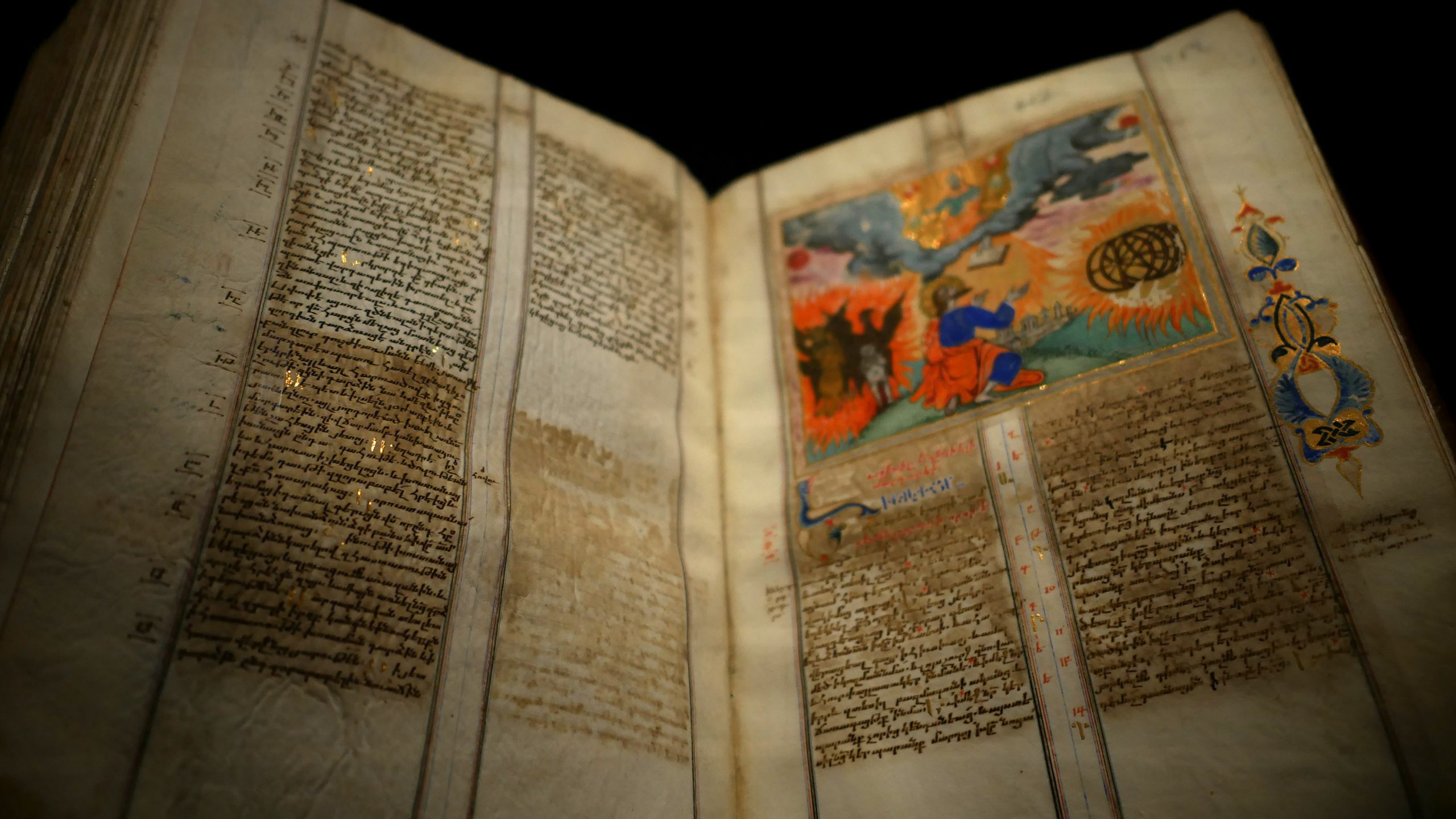
Bible page depicting the prophet Ezekiel’s Vision, 1648
Footnotes:
1 Daniel Schulke claims that black hellebore is “a poison of decided infamy; all parts of the plant render up potent venoms” (Schulke: 2017, 132). An extract of the rhizome was used in antiquity and into the medieval era as a “utensil of murder, most notably by King Attalus III of Pergamos” (ibid). Black hellebore contains the glycosides heleborin and hellebrin, which are chemically related to telo-cinobufagin (venom found in some species of toad skin). These glycosides slow the heart rate and affect cardiac muscle in a similar way to foxglove. The Key of Solomon the King contains a recipe for an incense to be used as part of a “spell for vivifying a talisman with the genius of Saturn” containing the stalks of black hellebore along with alum, assafoetida, scammony, sulphur, and cyprus ash (ibid).
Works Cited:
- Brooke, Elisabeth. A Woman’s Book of Herbs. London: Aeon Books, 1992.
- Bruno, Giordano. Cause, Principle and Unity: And Essays on Magic. Cambridge: Cambridge University Press, 1998.
- Hillman, James. Re-Visioning Psychology. New York: Harper, 1976.
- Müller-Ebeling, Claudia, Rätsch, Christian, and Storl, Wolf. Witchcraft Medicine: Healing Arts, Shamanic Practices, and Forbidden Plants. Vermont: Inner Traditions, 2003.
- Paris, Ginette. Pagan Meditations. Connecticut: Spring Publications, 1986.
- Randolph, Charles Brewster. ‘The Mandragora of the Ancients in Folk-Lore and Medicine.’ Proceedings of the American Academy of Arts and Sciences, Vol. 40, No. 12 (Jan., 1905), pp. 487-537.
- Rätsch, Christian. The Encyclopedia of Psychoactive Plants. Maine: Park Street Press, 2005.
- Schulke, Daniel. Veneficium: Magic, Witchcraft, and the Poison Path. San Francisco: Three Hands Press, 2017.
- Silberman, Henri. ‘Superstition and Medical Knowledge in an Italian Herbal.’ Pharmacy in History, Vol. 38, No. 2 (1996), pp. 87-94
- Yates, Frances. ‘The Religious Policy of Giordano Bruno.’ Journal of the Warburg and Courtauld Institutes, Vol. 3, No. 3/4 (Apr. – Jul., 1940), pp. 181-207.
Illustrations/Images:
- Medicina Antiqua Illustration
- 17th Century Bible: (photo provided by Serena Mor)
- Veratrum album Illustration
- Mandrake Harvesting
- Diana (Artemis) and Pan
- Prophet Ezekiel’s Vision: (photo provided by Serena Mor)
The Tradition of "Love Trees"
Old timers can remember the tradition of ‘Husband and Wife Trees’ well.
They recall a time when the vows had all been said and family and friends would all help plant two healthy young trees near the entrance of the farmhouse. One for the bride, and the other for the groom. Everyone participating in this happy day would help to dig the hole, plant the trees and water – and we can’t forget the secret ingredient when planting: infusing with love.
Side by side, they would grow. Basking in the warm sunshine and quenching rains. Sometimes storms would brew, but weathering these storms of life together made them stronger, more rooted because of them.
Sometimes they are close enough that eventually their branches touch, embrace even. Some never do – staying just out of reach of one another – but beneath the surface there is a bond that is so entwined we do not know where one begins and the other ends. Their roots, plant roots and mycelium are all entangled with one another, just like our families and friends are entangled with us. Helping one another, sharing water, nutrients and immunity, keeping one another strong and healthy.
But times have changed, couples have changed, and with it many traditions have become outdated. This traditional planting is slowly fading from our minds like mist on a bright sunny morning.
In this season of love, consider gifting your lover the tradition of ‘Love Trees’. Order a couple of trees and make a special date to plant this spring. A pair of trees that will represent your deep bond and commitment to one another. We have come along way from the traditional partnership of marriage – lets embrace ALL LOVE!
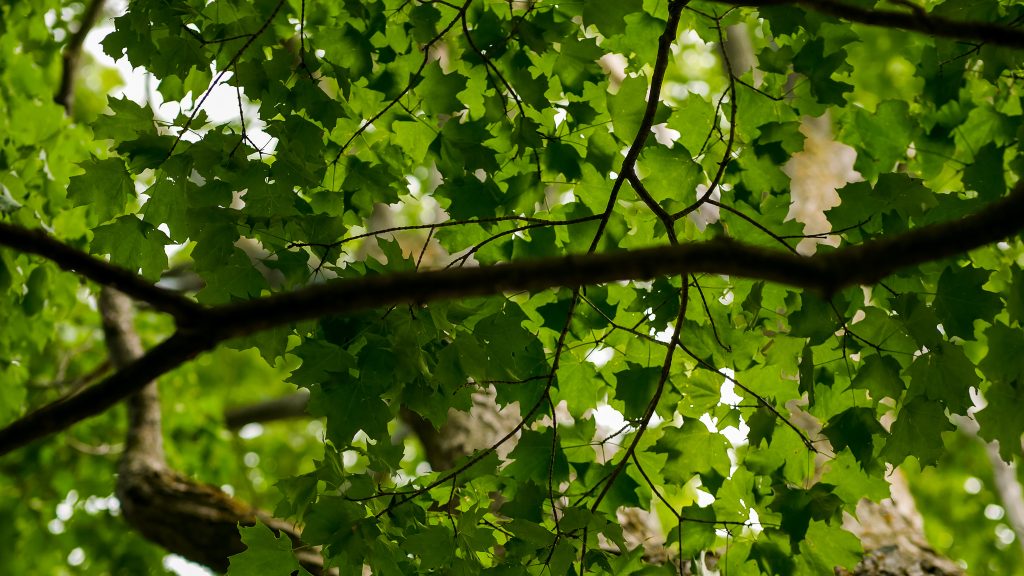
Photo provided by Serena Mor
Cannabis: Medicine or Poison?
An Exploration from the Perspectives of Traditional Systems of Healing
With the legalization of cannabis in Canada, we are seeing a growing public acceptance of this herb, an enormously expanding “cannabis industry”, and a variety of claims being made about its medical efficacy and utility. There are many well-documented traditional medical uses of cannabis, going back many hundreds of years, along with a growing body of contemporary scientific evidence supporting its various medicinal virtues. Yet many of the contemporary claims made about cannabis – branded as a miracle drug – are driven by the desire to sell products or simply as means of justifying one’s indulgences and addictions. In what follows, we will explore cannabis from the perspective of traditional systems of healing and consider some of the less acknowledged and discussed adverse reactions and disturbances that result particularly from its chronic use.
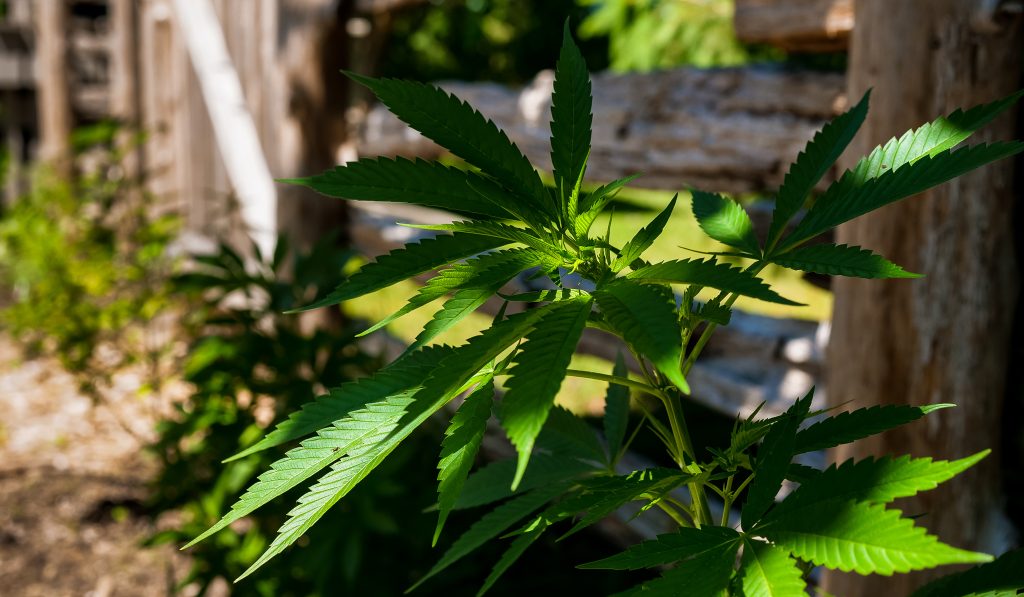
Sola dosis facit venenum; “All things are poison, and nothing is without poison; the dosage alone makes it so a thing is not a poison.” All medical practitioners, irrespective of their methodology or tradition, should carefully consider this phrase, attributed to the alchemist Paracelsus (1493 – 1541). In our era of one-size fits all medicine, Paracelsus’ insight into the difference between a medicinal and poisonous action of a substance being in the dose is not so widely understood. It is however quite germane to our discussion of cannabis, and rife with implications for understanding the nature of the substance. Paracelsus’ dictum leads us to the primary realization that the benefits or dangers of any substance – be it a food, herbal supplement, pharmaceutical drug, etc. – are entirely dependent upon the level and degree of an individual’s susceptibility to that substance. This phrase also asks us to question the range of effects that a particular substance can have, leading us to explore the nature and definition of a poison effect. Poisoning is not equivalent to a lethal dose, though it can lead there. Poisoning, we can say, is when an individual’s capacity for feeling and function has been disturbed.
Every Day Use
It is with chronic, daily cannabis use that we can often observe a very clear disturbance of an individual’s capacity for feeling and function, though the user may not always be able to perceive such an alteration. Many cannabis users have become convinced that their daily habit is what allows them to function, to be more creative, more emotionally balanced, more spiritual, less anxious, better able to relax and to sleep, etc. More often than not, those who make these emphatic claims have fallen under the spell of cannabis, and are no longer able to see beyond its alluring veil.1 As homeopath Colin Griffith explains: “what these users fail to see is that whatever effects their bodies manifest do not belong to them but to the drug. They are instruments on which the chemical drug is playing tunes. The effects are no more theirs than they would be if they took antibiotics for a tooth abscess.”2
In response to a patient’s inability to live her life without the use of cannabis, the natural medicine practitioner should ask: why is it that you are not able to function optimally in the first place? What are the underlying maintaining causes of your emotional imbalances and disturbances? Why do you have such difficulty relaxing and falling asleep? In such cases cannabis use may only be serving to suppress or cover over an underlying constitutional issue that needs to be properly addressed. And when we suppress a problem, rather than working to resolve or cure it, this may result in its temporary disappearance, but it certainly has not gone away. Suppression takes a surface manifestation of a disease and drives it to a deeper, more vital region of the organism, where it can create more chronic, intractable and debilitating illness.
An Ancient Medicine
Cannabis has a long history of use as a medicine. The Persian physician Avicenna (980 – 1037), who no doubt was familiar with cannabis strains much different than those that are available today, wrote of the use of cannabis for the alleviation of severe headache as well as treatment for degenerative bone and joint diseases, inflammation of the eyes, general edema, infectious wounds, gout, and uterine pain. However, he also pointed out that cannabis produces dryness that is “desiccating” (disrupting and deranging the vital fluids/fluid metabolism of the body). There are many clear signs that cannabis is warming, including increased appetite, red eyes, dry mouth and tongue, rapid heart rate and elevated blood pressure. As cannabis is excessively warming, it can result in a disturbance of the warmth activity of the organism, especially with regards to the metabolism. Chilly, sluggish and deficient digestive processes can often be observed in chronic cannabis users. The above mentioned symptoms are especially pronounced when it comes to the intensely psychoactive strains of cannabis that are grown today.
From the perspective of Traditional Chinese Medicine, it can be said that chronic use of cannabis can result in injuries to the Yin, damage to the Jing, and disturbance of the Shen. The primary constituent that causes such disturbances is THC. This is because, as herbalist Paul Bergner has remarked, “THC binds to the encocannabinoid receptors (CBD does not), and because it is many times more powerful than the endocannibinoids, the receptors drop in number and also become less responsive to maintain homeostasis.”3 Daily cannabis consumption often leads to gradually increasing dosage and frequency of use, clearly suggesting that tolerance and adaptation can develop quickly and easily.
Herbalist Todd Caldecott provides us with a useful explanation of cannabis from the perspective of the Ayurvedic tradition:
“Cannabis displays some of the properties of a poison, in that it spreads very quickly (vyavahi) and loosens (vikashi) the tissues. Through its subtle (sukhma) and penetrating (tikshna) qualities, it actually expands the space between all the cells of the body, opening up the channels (srotamasi). This is the reason for feeling high, and why it is consumed by sadhus and babas [who, unlike the average person, have been trained to focus their mind through contemplative practices]. It creates a subtle feeling experience that connects our experience to akasha (ether), the element of pervasiveness. So it opens and elevates consciousness, but not in an evolutionary way – just as a transient and limited experience of infinite space.”4
It is because cannabis serves to create space and allows for movement in the body that it can exhibit pain-relieving properties. It is for the same reason that cannabis can be utilized in some cancer treatment protocols (cancer is an uncontrolled proliferation of cells, when the tissue of our body can no longer maintain or identify its own boundaries. Hence, cancer is a disease that is very much related to ‘space’).
Recreational Use
While the chronic use of cannabis presents more pronounced dangers than occasional use does, infrequent or recreational consumption can still cause deep-seated disturbances on the level of body, mind and spirit – again, if that degree of individual susceptibility is there in a person. The use of cannabis “to relax”, for example, can easily become an addiction in the same way that others become addicted to drugs like diazepam to go to sleep at night or to “manage” (suppress) their anxiety symptoms. Such addiction is an often unconsciously motivated attempt to circumvent having to develop strategies and lifestyle changes that can lead to true understanding of the root causes of one’s issues. Without such an understanding, true resolution or cure is not possible.
The Physical Effects
Cannabis regularly results in a disturbance of the bladder, prostate, and sexual functioning in men. Cannabis can act as a potent aphrodisiac in the short term, but will usually lead to a lessening of erotic desire and even to impotence in some. Habitual use of cannabis results in a lowered white blood cell count, suggesting its negative affects on immune function. The homeopathic materia medica and provings of cannabis reveal that the adverse immune response that cannabis precipitates increases an individual’s susceptibility to bacterial respiratory infections as well as non-specific urethral infections, gonorrhoea, and chlamydia (homeopathic cannabis is an especially well known remedy in the treatment of gonorrhoea, and is indicated for genital discharges with burning pains and discomfort more generally).
The homeopathic materia medica of cannabis also reveals a strong affinity for disturbances of the thinking processes, with pronounced disorientation and a sense of disconnection accompanied by a free floating anxiety. The patient requiring homeopathic cannabis may often make mistakes in reading and writing and may generally have poor comprehension, tend to be forgetful and can become easily confused. While there can be difficulty concentrating, there can also be rapid thoughts and a pronounced tendency to theorize and draw far-fetched connections. Patients requiring homoeopathically potentized cannabis may report a sensation of the head being separated from the rest of the body (a symptom that says much about the state of being too much in one’s head, which cannabis in its crude form easily leads to. When this state progresses to severe pathology we can see, for example, paranoia and depersonalization. While cannabis users may give the appearance of being mellow and laid back, this appearance is often a symptom, as Colin Griffith notes, “of the distance that the cannabis has fostered between the smoker and reality”5). Other notable cannabis symptoms from the homeopathic literature include: sensations of being ungrounded, spaced out, unable to physically support oneself, of the limbs or the whole body feeling so light that it could float away; panic attacks, many fears including the fear of being alone in the dark, of entities, and of insanity. Rajan Sankaran notes that cannabis patients tend to exhibit oversensitivity and the need to “cover up for a feeling of inadequacy…The perceived weakness is actually an inadequacy in facing the threats, dangers and risks of the outside world. The Cannabis person feels unequipped to face them directly and hence observes the world from within the safe confines of a “glass cage.””6
Many of the above mentioned symptoms of chronic cannabis use are further understood when we consider the effects that cannabis has on our neurology. With prolonged use, cannabis disrupts the balance between the thalamus and hypothalamus and the pineal and pituitary glands. The anterior pituitary gland is responsible for the secretion of thyroid stimulating hormone, adrenocorticotrophic hormone, growth hormone, follicle stimulating hormone, luteinising hormone, and prolactin. We have a growing body of evidence suggesting that cannabis use results in significantly lowered levels of thyroid stimulating hormone. The hormones released by the thalamus and hypothalamus serve to regulate our flight and fight response, our appetite, thirst, and eliminatory processes. Negative modifications to these bodily functions are typically present after long-term use – at which point cannabis addiction tends to have already set in.
Ongoing pharmacological research on THC strongly suggests that it has marked affects on neuronal signaling and development, and researchers are beginning to explore how THC exposures during pregnancy could lead to adverse long-term changes in the neuronal development of babies and infants.7 Other research has drawn links between mother’s who smoke cannabis during pregnancy and an increase in the risk of their children developing leukemia and a variety of other serious birth defects. There have been further studies suggesting an increased risk of cancer of the esophagus and stomach with chronic cannabis use.
In Conclusion…
Cannabis is a complex herb, and one that should be carefully understood by those who use it. While public perception presents us with a marketable (and hugely profitable) image of cannabis, the reality of cannabis is more nuanced, multifaceted and complex than we are led to believe.
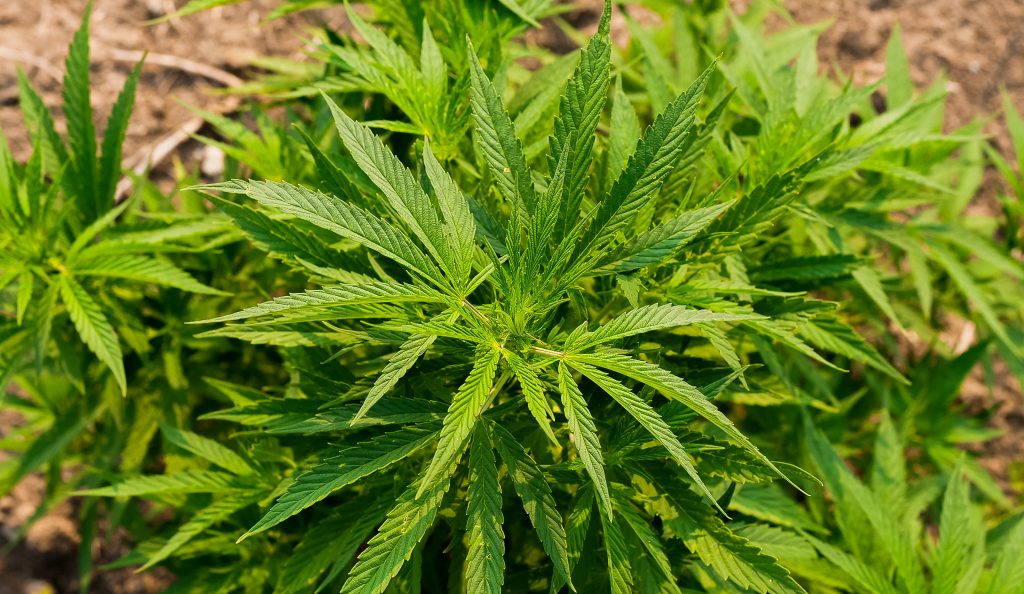
Footnotes:
1 From the perspective of the doctrine of signatures, the usually 5-leaved cannabis plant closely resembles a hand. This hand, it can be said, reaches for and makes an effort to grab hold of the cannabis user, who is rendered incapable of extricating herself from cannabis’ intoxicating embrace.
2 Colin Griffith, ‘The Companion to Homeopathy’ pg. 169.
3 Paul Bergner, unpublished writing.
4 Todd Caldecott, unpublished writing.
5 Griffith, ibid, pg. 168.
6 Rajan Sankaran, ‘The Soul of Remedies’, pg. 39.
7 See, for example, Kimberly S. Grant et al. ‘Cannabis Use during Pregnancy: Pharmacokinetics and Effects on Child Development.’
Photos provided by Serena Mor
Learning Herbal Medicine: Wild Bergamot
Already longing for some summer-time herbs? Please enjoy this guest blog by Taylor Eveson discussing some of the medicinal uses and properties of Wild Bergamot!
Wild Bergamot
Scent: Aromatic and Pungent
Botanical name: Monarda fistulosa
Common names: Wild Bergamot, Sweet Leaf, Indian Perfume, Horsemint.
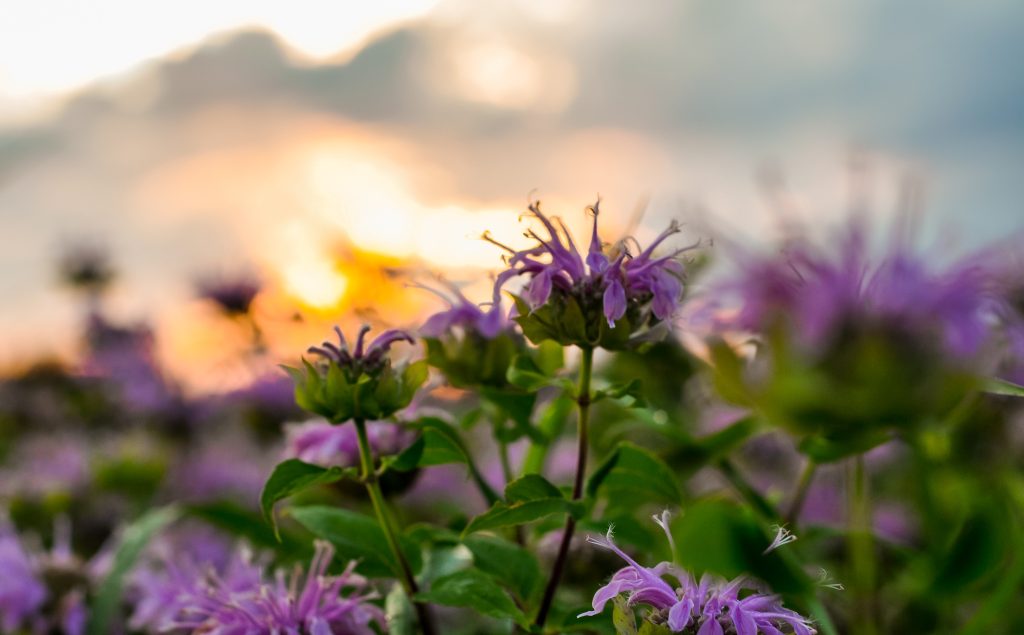
Identification
Wild bergamot is a perennial herb from the mint family. Like many other mints it has a square stem and opposite leaves. The leaves (5-8cm) are lanceolate with toothed margins and the bracts (the leaves just underneath the flowers) can be coloured with red or purple. Many stalks can sprout from the same root (known as a rhizome), so it is common to find several plants clustered together. It can grow to a height of almost a meter. From June to September it sprouts 20-50 flowers from the receptacle at the terminal end of the stalk. The tubular, irregular flowers can be varying shades of purple, lilac, pink or rarely white. The fruit is a nutlet, tightly clustered with many other nutlets. When the fruits ripen, they change colour from green to brown or black.
Habitat
It grows in rich, limey soils in dry fields, thickets and clearings. It prefers open fields and meadows that have not been cultivated for some time. It is distributed from Quebec to the Northwest Territories and British Columbia, and as far South as Georgia, Texas, Idaho and Northeast Washington. Some varieties are geographically widespread, but others are quite restricted to their range. Personally, I have been able to grow more than one variety of wild bergamot in a garden bed on a roof in Toronto; it did quite well as long as I watered it regularly.
Traditional Uses
Wild bergamot has many uses in traditional Native American culture. Due to its widespread distribution, many tribes utilized this plant including the Blackfoot, Cherokee, Chippewa, Cree, Iroquois, Ojibwa and Sioux nations. A Cherokee native, Tis Mal Crow, describes it as the medicine that draws out the fire, being particularly suited for burns and heat from fevers or infection. The Blackfoot applied a poultice of the flowers to burns or a burst boil, and after the wound was healed. Chippewa natives applied a poultice of crushed leaves to the head for headaches, and other tribes stuffed crushed leaves into the nostrils for the same purpose. Cherokee natives inhaled the steam from a hot infusion and also drank the tea for ‘sweating off’ flus and fevers.
In native American culture the concept of animal medicine archetypes is an interesting area of study. The indigenous people studied animals to learn about themselves and the medicines in their area. There were qualities about certain plants that merited an association to a particular animal; whether it was a favourite food of a particular animal, or some part of the plant bore physical resemblance to that animal, they recognized that the way animals related to plants contributed to why the animal was the way it was. So if they desired to attain to the nature of the bear or the deer, they would use the foods or medicines associated with that animal to achieve this end.
Wild bergamot is described as having a deer medicine animal signature. American herbalist Matthew Wood describes the plant as having long, slender stalks like a deer’s legs, supporting flowering heads that resemble a head with horns, or a rack of antlers. You can find the plant growing where deer like to graze near the edge of a forest, where they can quickly find cover if they sense danger. Male elks will roll in a patch of bergamot to attract a mate. The name “Indian Perfume” comes from its pleasant fragrance and its use as an aphrodisiac or in love potions. The deer archetype is associated with virility, love, passion and ‘the hunt’. The indigenous peoples believe the same vital energy is involved in hunting for a mate, or for prey; deer medicines fortify the body’s ability to perform in this regard. These medicines have a particular affinity for supporting the kidneys and the nervous system, both of which are intimately connected to the acuity of the sensory perceptions and are involved in the ‘fight or flight’ adrenal response to external stress.
Uses and Application
During a viral infection, the body initiates a variety of immune responses. Most notably, the core temperature is increased to a point that is uninhabitable for the virus. An individual will have the urge to curl up in bed to build their temperature. This internal increase in temperature is followed by a release of the heat through the exterior of the body by conductive heat transfer and sweating. The process of relaxation of the periphery of the body and attendant sweating is called diaphoresis. Warming, aromatic medicinal herbs like wild bergamot are known as diaphoretics. They stimulate the increase of the core temperature and allow blood vessels and surrounding tissues to relax so that the heat and the byproducts of cellular breakdown produced in the fight against the infection can be eliminated more easily through the skin and the digestive and urinary tracts.
The oil produced by wild bergamot is high in a volatile oil called thymol. Thymol is a powerful antiseptic for both internal and external use. It is also employed as a deodorant and local anesthetic. It is extensively used to medicate gauze and wool for surgical dressings. It is also utilized for commercial mouthwash production. Many different activities of thymol such as antioxidant, anti-inflammatory, and especially antibacterial and anti-fungal properties have been shown.
Indications: Fevers, headaches, lack of perspiration, respiratory infections, coughs, sore throat, colds and flus, cool and damp skin with internal heat, skin rashes, dermatitis, bug bites and stings, burns, depression, anxiety, insomnia, nervous hyperactivity, colic, flatulence, indigestion, poor appetite, diarrhea, constipation, menstrual cramps, candidiasis, urinary tract infections.
Herbal Actions: aromatic, diaphoretic, diuretic, antibacterial, anti-fungal, expectorant, carminative, nervous system restorative.
Energetics: Pungent, warming, aromatic, salty, savoury, draws out heat.
Dosage Examples
Infusion: 1 gram of dried herb per 5mL of water; 3-4 cups of tea a day or as a gargle, wash or steam inhalation.
Tincture: Fresh 1:2, dried 1:5; 5 mL or one teaspoon, 3-5 times daily.
Topical: Chewed or crushed leaves (from flowering plant) should not be left on the affected area for more than 5 minutes; its effect can become too hot and irritating. Steep a large handful into boiling water for 30-35 minutes and add infusion to bath water for sore muscles and nervous system conditions.
Photo provided by Serena Mor
An Interview With John Redden
This interview was conducted in April of 2021 as part of Everything Herbal’s ‘Herbal Elders’ series. This series seeks to honour and explore the unique contributions of longstanding members of the herbal medicine community in Canada, as well as abroad. This, the first instalment of the series, is being published to commemorate the life and work of John Redden – a vital member of the Ontario herbal medicine community. John was a teacher to many herbalists and naturopaths, a scholar, and expert clinician. He has contributed in innumerable ways to the profession. John passed away peacefully in his sleep on Monday the 25th of October, 2021.
This interview was conducted with Nick Faunus, Penelope Beaudrow and Victor Cirone.
Everything Herbal: How did you become interested in herbs, what was your journey like? Can you take us through your timeline and share your personal evolution as an herbalist?
John: I went to university for pre-med with the intentions of becoming a doctor, a medical doctor. I worked in hospitals in the evenings, on the weekends, in the summers when I was finishing high school and into university. When it came time to pick my med school, my father being a doctor and professor at Northwestern University, I had options, but I was completely disheartened by medicine because I couldn’t see the allopathic establishment really helping people. My whole life was geared towards becoming a doctor, and this was a hard truth to swallow. So I took a year off to travel and figure out what I was going to do with my life and I ended up travelling in England and Scotland and made my way towards this community called Findhorn. This was in 1977.

While I was farming and working at Findhorn, I had experiences with nature spirits and I went from being a non-believing scientist, a good little scientist, to now being a recovering scientist. I turned my back on hard science and became a little bit “woo-woo” because now nature is talking to me. While at Findhorn, I met members of the National Institute (NIMH) who were medical herbalists; these people put on lab coats and saw patients. And here I was thinking that herbalists were naked savages taking hallucinogenic drugs. I studied ethnobotany and that’s what I was shown.
So I decided to study herbal medicine and ended up going back to North America in 1980, and there was a guy by the name of William LeSassier who was in town – he was a teacher of a lot of American herbalists. I also met Ed Smith of Herb Pharm, as he was just leaving Boston, at the Hippocrates Health Institute. I was taking courses there on wheatgrass juice, fasting and all that. Ed directed me to Richard Evans Schultes at Harvard. So I went and visited Schultes while studying with LeSassier. Schultes let me take a semester of his ethnobotany course and I had this hard science/ethnobotany at Harvard and then LeSassier teaching his tradition of medical herbalism. I met Native Americans, took the Hoffmann course, Terry Willard’s course, and then I either just apprenticed to the few herbalists that I could find while taking all these different courses. Occasionally I would meet natives in Ontario – such as Ron Wakahatig – who would take me into the bush. Ron could also talk to the nature spirits – the little people – and was very much into the history of Native healing. Ultimately I had my experience in chemistry, biology and the hard sciences balanced with heart knowledge of the direct communication with nature. The plants were – I hate to use the word “speaking” to me but you have to say something… plants are alive and have a message that they give. Over the years, inspired by my time with Ed Smith, I started my own manufacturing business and made herbal products mostly for naturopaths, because most herbalists want to make their own products.
By 1983 I arrived in Ontario and discovered the fledgling Ontario Herbalists Association, and attended their meetings. They had a newsletter that was basically 8.5 x 11 sheets of paper that were stapled together, folded over and mailed to you – a little booklet. I was just a lurker in the OHA and I just received the newsletters and the journals, and in 1990 I volunteered to help produce a Herb Fair. At the time, the OHA was putting on these really rather hapless public presentations and they wanted to beef it up and get a slot at the Harbourfront Centre in downtown Toronto. Anne Bridgeman – an early member of the OHA – and I, created the Herb Fair which ran from 1990 to about 2005. For the first 10 years it was mostly Anne and I and a mass of volunteers. This was the largest herbal event in Ontario. We got more than 5000 participants, and the Harbourfront Centre guaranteed us a slot every year, it was the first Sunday in June. At first Richter’s Herbs supplied us with plants, followed by many others. It became a very successful and popular event.
But as the years passed Harbourfront and the City of Toronto became increasingly concerned with “regulations”. All these people who made herbal remedies didn’t have any “licensure” – but nobody cared, it was a folksy event. Every year the city took away more and more rights from our vendors, and I backed out of it by the 10th year. The Harbourfront people even brought in a hot dog truck vendor! I made him go to the farthest corner of the Fair, and pestered him like a seagull until he left, it was just disgusting to smell this food with the scent of the herbs all around you. We had our own food vendors and I was the main cook for many years, and we produced 600 meals from noon to 5PM. But the city just kept trying to take it all away from us, and all of the permissions we were granted in our original contract were little by little taken from us.
I was really into serving the professional community as a manufacturer. I have my own clinic, and oversee two naturopathic doctors and my own practice and am a clinic supervisor to naturopaths from coast to coast, who email me daily with questions about their cases, and of course the answer is one of my herbal products. I’ve got a professional wing and a grassroots wing. I always thought that it was the grassroots that was going to make the politicians change, not people sitting in an office wearing suits and carrying briefcases wagging their fingers at the government, trying to make them realize that they are the bad slaves of big pharma. The bureaucrats don’t want to hear that; they’ll just wait until the herbalists stop talking and simply go back to what they were doing. I’ve always thought that the thing that would allow herbal medicine to really flourish is the grassroots movement; speaking directly to the people. In my efforts, I took over the OHA Journal and brought up its standards to the point that our journal was reaching universities across Canada and Europe. I thought we needed to have something to give to the public – courses, fairs, events.
“The grassroots movement needs to swell up …”
I remember a day, around the year 2000, that the Federal Health Minister got ambushed in Toronto, and was forced to face a crowd gathered in Nathan Phillips Square, a wave of people demanding that the NHPA (Natural Health Products Association) be formed. The biggest impression I got from that was that the people are going to make the politicians move because they can vote. Professional herbalists can put on a suit and tie and look as uncomfortable as they are and wag their fingers and not make as much of an impression as a grassroots action like that. I’ve always believed that the folk movement has the power; herbalists are more like weeds, you mow us down and we come right back. Big government are never going to ever get rid of us but they are going to keep us as the poor cousins to the naturopaths and medical doctors, and because of that we have to make our appeal to the general public.
The oddity I’ve discovered is that it is easier to get clientele in Toronto than it is “up north” in a village or small town, because many people in these remote locales prefer OHIP (Ontario Health Insurance Plan) to paying out of pocket. In Toronto there is sophistication and education and people are paying naturopaths big dollars to be treated. The naturopaths that I appeal to are not the little white powder pill naturopaths but the herbalist naturopaths. I did teach courses at CCNM (Canadian College of Naturopathic Medicine), what they called Botanical Medicine, between 1995 and 2000, and then I kind of fell out of favour with the staff because I criticized naturopathic medicine a little too much. They are my “bread and butter” so I’m careful but at the same time I do remind them that they are losing their roots by trying to become Doctors and impress everybody with their education. In my view, especially the first few years out of school, herbalists and naturopaths should keep a low profile until they have sufficient experience. If you are going to sit in an office with a patient sitting across from you, you’d better be prepared. If you are just going to make products and take care of your friends and family, that’s one thing; but if you think you can make enough money in a clinic, then get everything together before you start telling the world that you can do these things.
“I was able to shut down during the month of August and load my van up with bags and buckets and travel between Sudbury and Timmins, picking blueberries, mushrooms, and herbs to dry and process into medicine.”
I’ve engaged in the world of online education, held courses in my shop, travelled, going to naturopathic conferences – I put on the suit and tie and comb my hair for them – and the rest of the time I’m flannels and blue jeans. I’ve covered the whole spectrum of herbal medicine as it’s available today, except that when I started I didn’t have enough business to open my doors every day and sit in my office. So I was able to shut down during the month of August and load my van up with bags and buckets and travel between Sudbury and Timmins, picking blueberries, mushrooms, and herbs to dry and process into medicine. The blueberries I actually dropped off at roadhouse taverns, I would give them a tray of berries in exchange for a meal and storage space, and then on my way back from the North I’d get my blueberries and mushrooms that I had stored. On my way back my van was full, front to back top to bottom full of wild crafted plants that I’d then work to get into tinctures in the fall. In the winter I’d be seeing patients and making custom formulas. Now I buy my herbs from herb suppliers that I like to support.
Another thing – in the 80’s and 90’s farmers were getting together to create an Organic Farmers Association and there were few standardized rules across the country that were backed by government regulation. The Canadian General Standards Board, the CGSB, has a standard for everything – from hammers to you name it. All of that is standardized, there’s a government program for the manufacturing of just about everything, but for organic farming there wasn’t. So I joined 50 to 100 other people and we helped create the first federal regulations in Canada that helped establish just “what is” organic farming, processing and sales. This document has been rewritten or updated many times and I only participated in the first two versions of it, and I realized I’m not an admin guy, so I helped generate that and went to all of these conferences. I do still go to the Guelph organic conferences and places like that but I no longer want to work with the government, it’s too oppressive. So that is kind of my arc in a way.
The Canadian Journal of Herbal Medicine…
In the early years of the Canadian Journal of Herbal Medicine people were more interested in big American names and people who had published books, than the local Canadians. So the journal was always half and half. Our good herbalists like Christine Dennis, Walter Kacera, Anthony Godfrey, they were all publishing their work but we also needed contributions from people like David Hoffmann, Aviva Romm and other big names to help sell the journal. I took a leave of absence from my role as journal editor and went to Scotland to do a graduate program in medical herbalism. This was at a branch of the National Institute called the Scottish School of Herbal Medicine, associated with the University of Wales. You have to be more than 10 years a herbalist graduate etc. to get in and I was already 20 years in at the time. I took that course and while I was doing that I handed over the journal duties to others and the Board just kind of lost interest. Often, when people find out how much work it is to be the editor of a journal, they sometimes just let it die. When I came back I did one online journal which the OHA published for about a year or two, and when they updated their website that disappeared as well. I don’t know why the journal, which I think was majorly important and a great outreach program for herbal medicine in Canada, has been ignored. Maybe a future board of directors would consider reviving it. The Canadian Journal of Herbalism – we were printing maybe 1000 copies, 500 circulated across Ontario, 200 across Canada, and the rest across Europe going to university libraries and to a few national institutes of medical herbalism, mostly British. Paper journals are going to die, but an online journal would be great. I’m not interested in the job of being a journal editor anymore but there was a time when I had a lot of work, extracurricular work, for herbalism as a journal editor and I felt that was a good outreach.
Nowadays, with so much on Facebook and whatever else, people can easily broadcast around the world. I’ve got little phone recordings that people took of me when I was giving herb walks at the annual Heartwood Herbal Gathering. Heartwood is now (was) the replacement for the Herb Fair as the largest herbal gathering in Ontario. It is a wonderful venue for herbalists to come together, spend time in the bush and with each other and share ideas, products, etc. This kind of thing is so important. I’ve gone to Boston and the Great Lakes and Michigan for different herbal events. I don’t like crossing the American border anymore, and besides, now these events are all online, we can’t even have people face to face anymore. I don’t know what to say about that…the last thing is, I believe that the herbal community of Ontario is suffering from isolation. We are not allowed to come together, and we need something. If this discussion were to be rebroadcast or shared in some way, that’d be really nice. I’ve been in the OHA since 83’ and I’ve been an herbalist since the 70’s and went from heavy science to modicum science. To make tinctures you’ve got to use science, the correct solvents and times, and the proper staging; all of that is scientific. But when it comes to the way the herbs work, we can argue all day long about what actually is in the herb that is bringing about health. Or how do you best pick an herb. We all have our own point of view, and mine is just one.

Everything Herbal: Can you talk to us about your boundaries when it comes to being an herbalist?
John: The naturopathic doctor whose office is next to mine, was a doula attending births, and a woman of course. So if I got a gynecological case I often gave it to her because I preferred not to do gynecological exams, and that was partially out of fear of litigation and partially because I always thought that it was not a man’s place. Just the fact that we call it ‘gynecology’ – that’s what men do. Women have been attending births through all history; women have always taken care of women. In medicine, men didn’t attend births until they saw that it was another form of income, it was in the 17th century when they thought that they could take that over too. I will treat women but I won’t do physical exams. That is one boundary I’m clear on. I have very few cases that I turn away because I’m not capable – the cases I turn away are people who are not cooperative. It’s not my way or the highway, but for example, there are hepatitis C patients who had really terrible lifestyles that generated their condition, and they just wouldn’t give up drinking, just wouldn’t have protective sex. They would come to me with terrible lesions on their skin and they would get better but then they would start lapsing again, drinking and partying to excess, and I’d give them one warning – this is the last time I’m going to clean you up, and if you come back to me in a wretched state I’m sending you along. That was a boundary. If a patient can’t do the work it’s not an holistic and appropriate approach to just treat their disease by covering it over. You have to treat their lifestyle, their spirit. The people who would come to me and didn’t want to change, who just wanted to be able to do their thing and take the herbs to maintain a baseline of health; that’s a boundary line.
“I do use narcotic and toxic herbs because I know how to.”
By that I mean I can use Belladonna, Datura, Kratom, Ephedra, Strophanthus; these are herbs I would not give to a beginning herbalist to use. But half of them you can find or buy and they have to be used in the correct context. My boundary on that is I have to make the product in such a way that the patient can’t poison themselves. So if I’m using belladonna I’ll add it to a compound where they’ve got to drink a bottle to get even close to a toxic dose. You can’t give someone a big bottle of Ephedra, they’ll have a heart attack, but you can give them 10ml if there is a fear of them going anaphylactic. Precautions like that can save someone’s life. People carry those epipens, but those are notoriously unreliable, they expire and break down. So I give some of my allergic patients little emergency bottles with Ephedra and then a compound containing Ephedra. Those are the main boundaries. There are also boundaries of propriety, what is the best way to treat somebody? If a person has a condition that is beyond my skill set I just open the rolodex – a quaint concept, and send them to other people. I ask my patients: do you want me to give you counselling or do you want to go to a psychiatrist or psychologist? And I have a list based on the kind of lifestyle psychotherapy that they want. And that’s about it when it comes to boundaries.
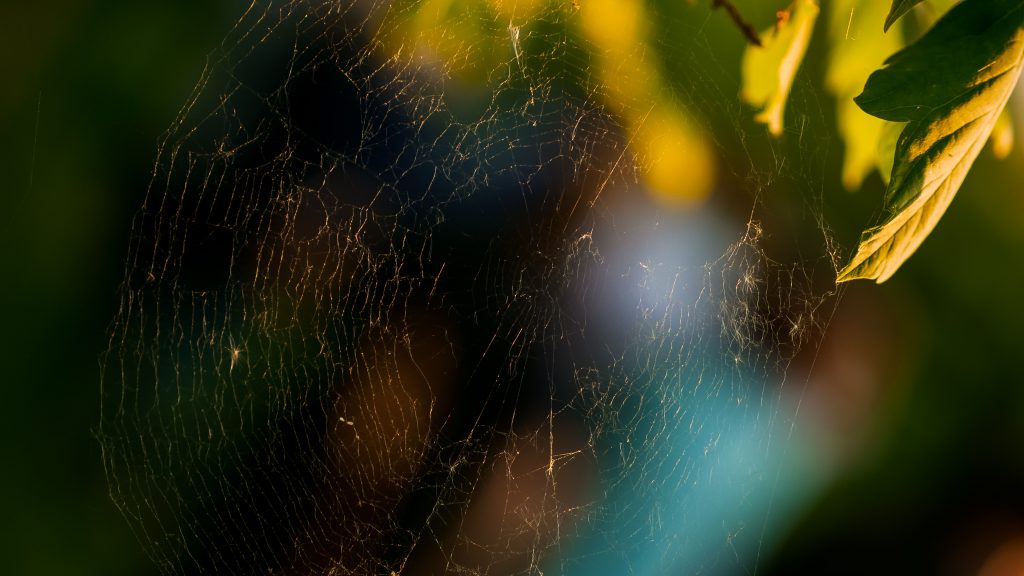
Everything Herbal: Speaking of hepatitis C, the herbal industry had a large role to play in the AIDS epidemic…
John: HIV was not a death sentence if you did certain things and avoided doing certain other things. You can live with HIV. HIV and hepatitis C often came together. It was mostly the guys from the “gay village” in Toronto that were coming to me and it was very difficult to make lifestyle changes with many of them, there is no judgment, it’s just that you can’t have hepatitis and spend the weekend drinking. You just can’t drink hard liquor all night long and expect your hepatitis to be treated with herbs.
Everything Herbal: Right at the beginning, between about 84-88’, most in the established medical profession wouldn’t even allow someone with AIDS to come into their surgery, they wouldn’t even touch them. There are people today who are still alive with HIV because of herbs.
John: The same is true of many cancer patients, too. I have patients who chose between surgery, chemo and herbs and it was a tough call, they had no herbal knowledge but were so desperate, and some of them of course did surgery and chemo and then the cancer comes back and they couldn’t do it a second time. Dante only went to hell once. These people just couldn’t go through with it a second time so they show up in my office and they didn’t know anything about natural medicine but were desperate. In those early days medical doctors were such failures. Now they’ve learned how to copy our success and call it their own because they’ve got the ticket, the office, they’ve got OHIP, or they are paying Big Pharma to copy our products. A lot of the pharmaceutical products are not nearly as vital as a crude tincture, as plants from the ground. The medical doctors have step by step, copied naturopaths and taken them into their office and a few of them are copying herbalists.
Of course the Hoxsey formula has been treating cancer patients for over 100 years. But yes, I remember those days when desperate people sat looking at me with a death sentence, and the first thing I had to assure them of is: no, hepatitis C is not a death sentence, HIV is not a death sentence, cancer is a word not a death sentence. Doctors are given such authority in our society…
I think knowledge is for sharing, I don’t believe I own knowledge, I discover things and I publish it. Newton and Leibniz both discovered calculus, yet they were not in communication and across the channel from each other, so calculus existed before either of them discovered it. The same thing is true with herbal knowledge: you read enough ancient books and you realize that they knew things that we are still discovering, they just used a different language. Whatever I know, I don’t take credit for except that I’ve aggregated pieces of information that maybe someone else didn’t associate and then re-present it so that things make sense. A good comedian only talks about daily life but makes it funny because being shown reality in a different light. A good author is just talking about daily life but makes it so that you can see it and get it.
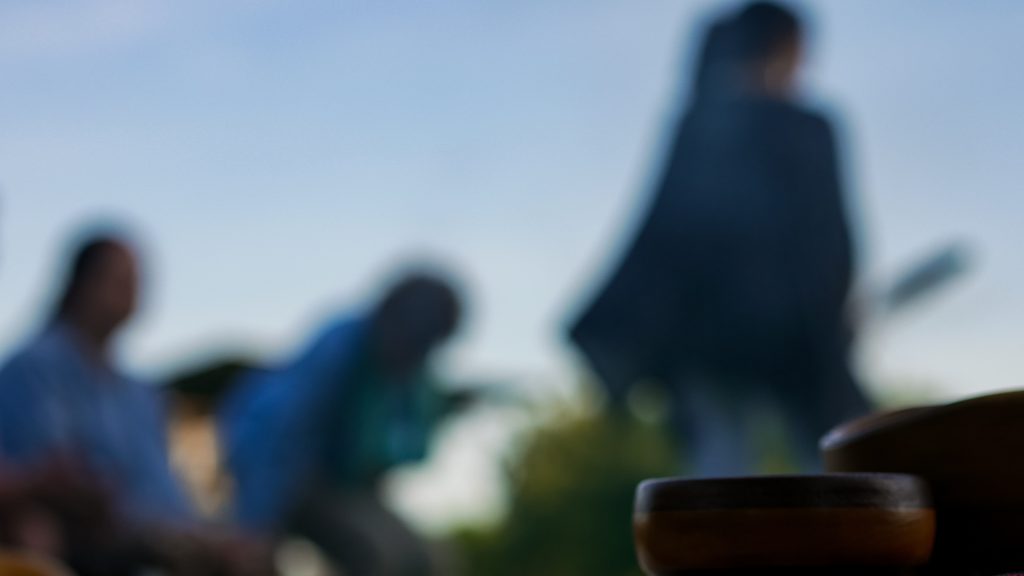
Everything Herbal: with regards to women in herbal medicine, why do you think it is that our herbal industry seems to be more led by men than women?
John: I think it is older men who have dominated herbal medicine because women took care of family and children and that division of labour was more common to the generation that I’m from. But if you go to the naturopathic school today, they have 400 students there, 100 new students a year, and today about 95 of them are women. Similarly with medical school. I think that women are taking over medicine altogether. Now the professors and old timers are men, and I don’t think that is right. Women, I believe, are better suited to practicing medicine than men; until men develop an understanding of their inner female. Everybody has a male and female inside of themselves. And medicine is a feminine practice, care-taking is what women do. The mother wrapped her skirts around her children; the men pushed them out the door. I think it only appears that men are dominating herbal medicine, but I see more women everywhere coming up and it won’t be but a generation before men are the smallest element in herbal medicine and in orthodox medicine, while women bring about the heart element. I don’t agree that men dominate herbal medicine, the women have already outnumbered the men.
Everything Herbal: Yes but it is the more famous herbalists who tend to be men, the public figures that people have heard of…
John: Christine Dennis is an amazing herbalist but she has never written a book. And so when I look at my bookshelf, and yes I have Jill Stansbury’s text… I can’t find a Canadian book on my bookcase. The closest books to me right now are the ones that I reach for most often, just above my desk, and there is not one Canadian woman there. And I agree with you about this element of male dominance, but again it comes back to us still living in the shadow of the previous generation. People whose books are on my shelf tend to be people who are mature in their careers when they wrote them, and they were mostly men. One very good exception I can think of is Clinical Naturopathic Medicine by Leah Hechtman – it is the #1 clinical textbook. And Aviva Romm’s textbook that she wrote while she was in med school. And there is a great handbook by Marisa Marciano, a pocket hand book that is a very good for students. Other than that I don’t have any woman’s books up here, certainly no Canadian women’s books, and I lament that. I keep saying to people: step forward. Women need to introduce a kind of quality that men do not, into medicine.
“The thing that you might find in my essays, or if you sit in my clinic, is the spiritual element of herbal medicine, which is deeply important to me.”.
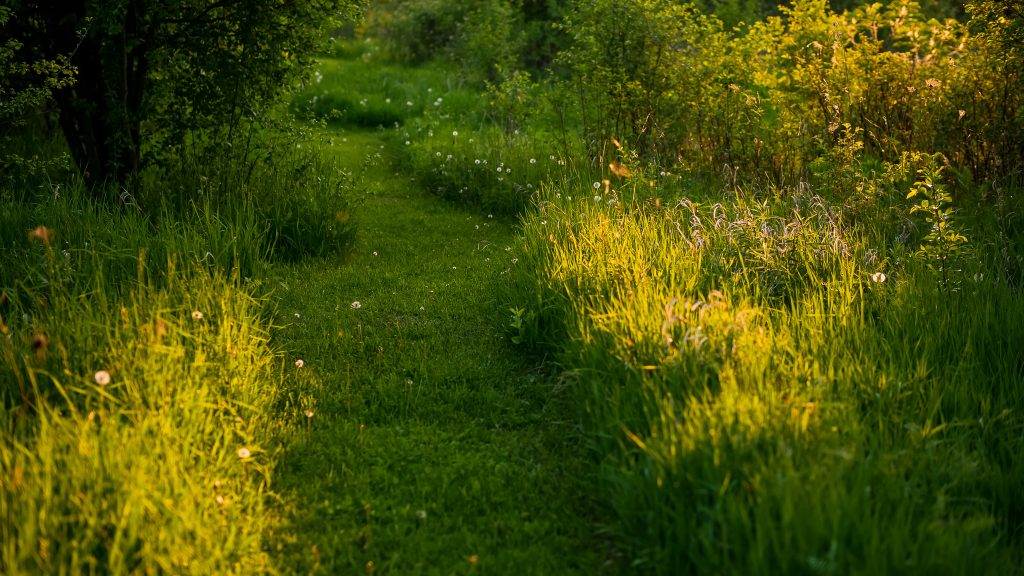
The name of my business, Viriditas, comes from Hildegard of Bingen. Viriditas is a word that Hildegard gave for the life force, but she is a Medieval author and the inquisition would have killed her if she said anything that was not accepted. She had to couch all her language to be accepted by the Church, she was in the Church as a nun. She had a birthing centre, a clinic, a garden where she grew the herbs, and a lab where she made her medicine. So Viriditas was not just a life force but the life force that had directive. This directive came from the divine part of creation, it was the will of God. In Hildegard you have a very clear hierarchy from the Earth to Heaven, a conception that all things are guided by some divine will. It took a visionary like her to perceive that will in nature – but you still can use her herbs and formulas. She also uses gemstones and prayer. Most of medicine, until the advent of Anglo-Saxon medicine and Renaissance medicine, every tradition of herbalism involved prayer or incantation. You had to invoke some being besides just taking a cup of something. Everything had to be linked, songs, rituals, medicine. Lots of people still have rituals to reorient a person socially and back into nature. When we think that herbs are just herbs, just bottles of liquid or pills, without any other element… well, then we are lost at that point, and our medicine is lost too. I really like to speak to that because it is a part of my practice to reorient people back into society and nature. For North American Natives, drumming is how they do that. Everybody has to make a drum, play the drum, know the traditional songs, and when they sing them there is a lesson that goes with it. That is a spiritual medicine. But if you are in the city of Toronto, I can’t ask my patient to build a drum, or have a stack of drums in my closet and sell them drums – that is not part of my tradition, so I have to find other means. I have a lot of strong opinions and I don’t mind giving them…
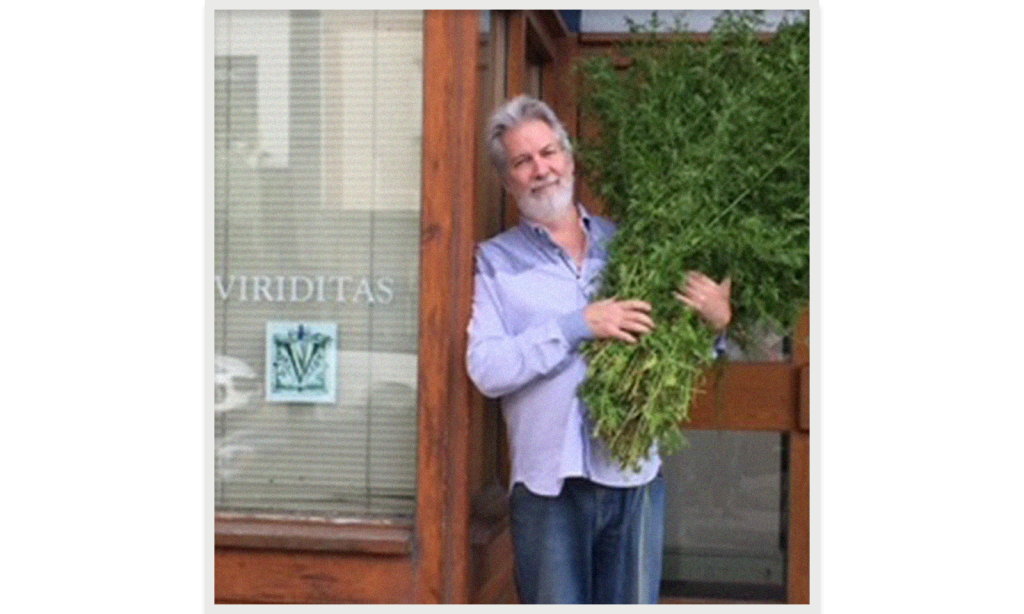
Photos of John provided by Taylor, with additional photos provided by Serena Mor
Hot Chiles Bite Winter Back
Chile Pepper Medicine Turns Up the Heat
While on the quest for the shortest route to the East, Spanish navigators discovered the hot and fiery chile pepper. Abundant and adored by Caribbean natives, the conquistadors called it pimiento, the Spanish word for pepper.
Capsaicinoids are the naturally occurring compounds that give chile peppers pungency and heat. Every type of pepper has a unique taste – from slightly floral, fruity, sweet, and spicy to pungent – and each type has a heat rating that is based on the kind and intensity of the capsaicin it contains. For example, peppers that contain only nordihydrocapsaicin (NDHC) will present a mellow, warming effect that recedes quickly and lingers briefly at the front of the mouth. In contrast, the explosive heat and pungency of pomodihydrocapsaicin (HDHC) produces a strong numbing, burning sensation in the throat and back of the tongue that is more intense and lasts longer.
Chile heads (lovers of hot peppers) have long known that the hotter the chile pepper (and the more capsaicin it contains), the greater will be the endorphin rush they experience. Endorphins are produced by the pituitary gland and the hypothalamus – when released they cause a positive feeling in the body, similar to that of morphine. By triggering endorphins, capsaicins work as natural painkillers along with boosting memory function.

How to Gauge the Heat
Want to eat more chiles but are afraid of their blazing bite? I have two tips for helping you enjoy the incredible benefits of chiles.
First, get familiar with the Scoville Heat Unit (SHU) system of measuring the heat in chile peppers. The Scoville Scale is a standard measurement of the concentration of capsaicin (the constituent that causes the skin and mouth to tingle or burn) in every type of pepper and assigns it a number from 0 to 5 million.
Secondly, start cooking with peppers that are low on the Scoville scale and begin to work your way towards a higher rated pepper. Sweet bell pepper types rate 0 to 1000 Scoville Units, which means that they are delicious (red bell peppers are sweeter than green), with no discernable burning, but are not high in capsaicin. Hungarian paprika is only slightly hotter, with 1,500 units, but it imparts an apple note that is perfect for stew and goulash dishes, or in vegetable stir-fries. Poblano chiles and New Mexican types move up the scale to 7,000 SHU and are roasted or stuffed and baked for a mildly hot experience that dissipates quickly.
My goal, when I began to grow, buy, and cook with chile peppers was to become comfortable eating cayenne peppers, which flare from 30,000 to 50,000 SHU. This is a reasonable goal because we enjoy significant health benefits from adding one fresh (or dried) cayenne pepper to smoothies, soups, stews, stir-fries, or other dishes at least three times per week.
I’m happy to say that it didn’t take long before I was sizzling my way up to Habanero type peppers, which register between 80,000 and 150,000 SHU. Then my friends at Shady Acres Herb farm in Minnesota sent me some Bhut Joloka (aka Ghost) chiles that they had grown. Although Carolina Reaper chiles register higher in SHU (1,600,000 to 2,200,000 SHU), Ghost chiles are still considered to be incendiary, combusting at 855,000 to 2,199,999 SHU. I dried my cache of Ghost red hots and sometimes, when I am feeling adventurous, I slip on a pair of disposable gloves, snip off a quarter-inch piece of that phantom pepper and dice it into teeny granules which then get added to a chowder or curry dish. It never fails to deliver the famous chile-rush.
Health Benefits of Cayenne
Being exceptionally high in vitamin A, which acts as an antioxidant to help fight aging and cell damage, cayenne peppers, and all others above or below them on the Scoville Heat scale, deliver an incredible array of healing gifts. Buy or grow them and use fresh, or dry and crumble them into all kinds of dishes.
Here is what you can ignite once you begin to enjoy the cayenne conflagration:
- Anti-inflammatory action – reduces the pain and swelling of arthritis. Cayenne cream or salve is applied topically to treat arthritis and muscle pain
- Lowers cholesterol – and triglyceride levels for heart health
- Fights bacteria and viruses – with its high vitamin C content
- Increases circulation – by improving blood flow and stimulating sweating (an important process of detoxification). A tea made of warm water, lemon juice, and cayenne pepper is an excellent morning beverage for total body health
- Anti-fungal properties – soak feet in warm water with one tablespoon powdered cayenne pepper to help alleviate athlete’s foot
- Aids digestion – capsaicin stimulates the digestive tract and may give relief to people suffering from peptic ulcers by stimulating blood flow that nourishes the gastric mucosal membrane
- Helps relieve allergies – and acts as a decongestant by stimulating the release of mucus from respiratory passages
- Reduces blood clots – and can be used as a first response for wounds to stop bleeding
How about you? What varieties are you eating or using to make medicine?
Watch for my next post, Cooking with Cayenne. Meantime, here are some recipes that will warm and soothe:
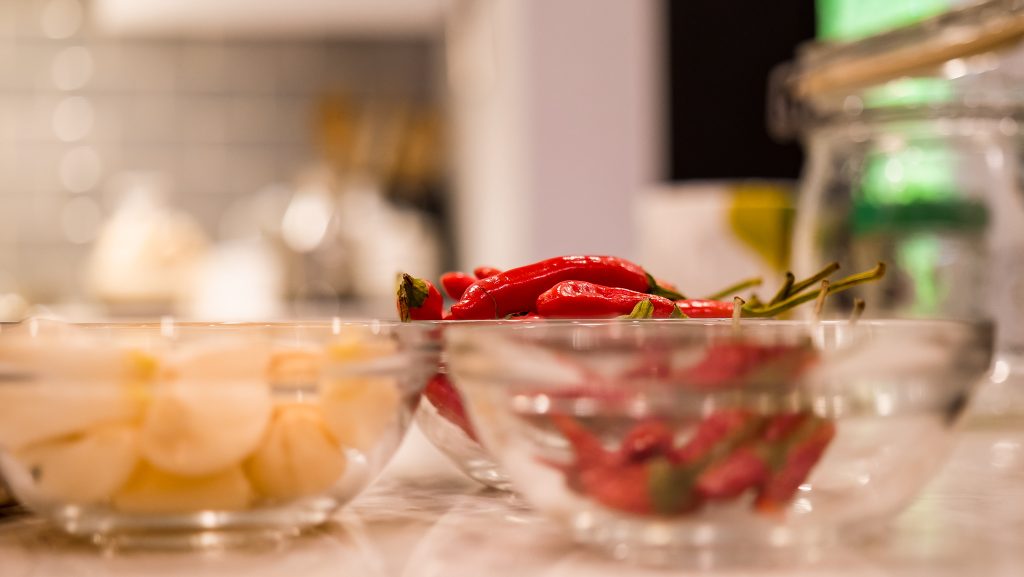
Harissa
A key flavouring and condiment in Middle Eastern and North African cuisine, Harissa is never far from a Moroccan, Libyan, Algerian, Turkish, or Tunisian table. In fact, it is the go-to seasoning for many cooks in the region. Often it is added to soup, stew and curry dishes or tagines, used with meatballs, or rubbed into kebabs and other meats before grilling. The main ingredient is cayenne (or other hot chile peppers) and while it is easy to make from fresh or dried hot chiles, it is also widely available in cans or tubes, or freshly prepared in tubs in Middle Eastern or North African markets.
Dairy products (in particular yogurt), and the starch in pastas and couscous, help to dial the heat down and so they are often paired with harissa and other hot chile dishes.
(Makes 1/2 cup)
Ingredients:
- 12 cayenne, serano, or jalapeno chile peppers, fresh or dried
- 3/4 cup boiled water
- 1 tablespoon cumin seeds
- 2 teaspoons coriander seeds
- 1 teaspoon fennel seeds
- 1 piece (2-inch) cinnamon, crushed
- 1/2 teaspoon fenugreek seeds, optional
- 2 cloves garlic
- 1/2 teaspoon sea salt
- 1/2 cup extra-virgin olive oil
Method:
Discard stems and seeds from the chiles. Using kitchen scissors, cut chiles crosswise into thin strips, letting them fall into a bowl. Pour water over top and soak for 30 minutes or until softened.
Meanwhile, in a small, heavy pan or spice wok, over medium heat, dry-fry cumin, coriander, fennel, cinnamon, and fenugreek seeds (optional) for three minutes, or until fragrant and light brown. Set aside to cool.
Using a small food processor or blender, chop the garlic with the salt. Drain chiles, discarding the soaking water (or reserving it for another use later). Add chiles to garlic and process until smooth. Add toasted spices and process to incorporate them into the mixture.
With the motor running, gradually drizzle in the oil through the opening in the lid, processing the mixture until the sauce is well blended to a consistency of mayonnaise.
Pat’s Cayenne Fire Cider
The name sounds daring, and the brew is ablaze with the energy of healing ingredients. This natural sinus, cold and ‘flu folk remedy has been home-brewed for eons by herbalists, naturalists, and anyone who has learned of its efficacy. Grated horseradish root, garlic, onion, ginger, and hot peppers are the main ingredients that are steeped in organic unpasteurized apple cider vinegar, but you can develop your own amounts and combinations. Before my horseradish plant grew large enough for me to actually dig the roots, I developed the following simple and very potent blend. Now I add the horseradish, but you can omit it if you can’t find fresh root.
See the Resources section for a link to herbalist Rosemary Gladstar’s Fire Cider method [2] and visit the Mountain Rose Blog [3] to read about this well-known herb supplier’s Fire Cider.
(Makes about 4 cups)
Ingredients:
- 25 whole fresh cayenne peppers
- 1 head garlic cloves, peeled and sliced
- 1 cup fresh ginger, grated
- 3 – 4 cups raw unfiltered apple cider vinegar
- Optional Ingredients
- 2 cups grated fresh horseradish
- 6 sprigs fresh rosemary, horehound, thyme, sage, parsley
- 2 onions, chopped
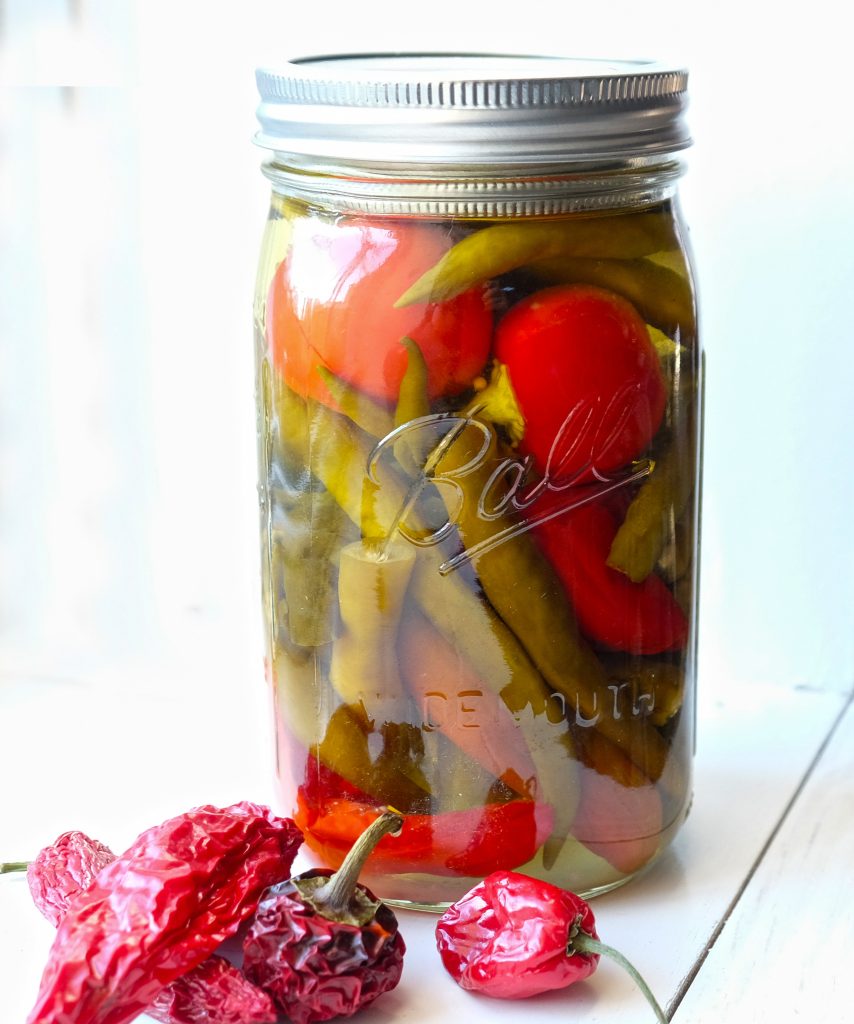
Method:
Clean and slit or halve the peppers. Loosely pack them into a one quart mason-style jar. Add garlic slices and ginger. Add horseradish and other optional ingredients, if using.
Fill the jar, covering the ingredients with vinegar, leaving a half-inch space.
Make sure the peppers are below the vinegar, and cap the jar with the 2-piece lid. Set aside in a cool, dark cupboard for a month or longer.
After steeping the ingredients, you can refrigerate the jar (although it isn’t required). If you don’t strain the vinegar, you can fish out, drain and use the chiles, garlic slices, and ginger in recipes until they are finished. Alternately, you can strain the vinegar and make syrup as follows.
To make a cough syrup: Strain the steeped vinegar into a 6-cup measuring cup, pressing on the solids to extract as much vinegar as possible. Discard the solids.
For every cup of strained vinegar, add 1/4 – 1/2 cup (to taste) liquid honey. Stir well or heat over low setting in a saucepan to melt and combine the honey. Pour into 1-cup jars, cap, label, and store in a cool, dark cupboard.
Serving suggestions for unsweetened steeped vinegar:
- Take one tablespoon of vinegar in a glass of warm water with one to two teaspoons of honey every morning for its tonic benefits.
- Substituting steeped vinegar in recipes that call for regular vinegar (salad dressing, dips, spreads, sauces, and other condiments) will infuse them with the healing benefits of Fire Cider.
- Cough Syrup: Take one tablespoon at the first sign of a cold and repeat every two to three hours until symptoms subside.
Resources
[1] Tucker, Art and Thomas De Baggio, The Encyclopedia of Herbs. Portland, OR: Timber Press, 2009
[2] Rosemary Gladstar, video of her Fire Cider method
Pat Crocker cultivates cayenne and turns up the heat in recipes. Her newest book, The Herbalist’s Kitchen is available on her website and at all major bookstores. Photographer, lecturer, and author of several award-winning books, including Coconut 24/7, Preserving, The Vegan Cook’s Bible, The Vegetarian Cook’s Bible, The Healing Herbs Cookbook, The Juicing Bible, and The Smoothies Bible, Pat would love to hear from you about your personal adventures with herbs. www.patcrocker.com
Blog photos provided by Pat Crocker
Header photo provided by Serena Mor

